


























Honesty - Integrity - Pride - Innovation - Growth

We’re proud of our expertise across all key manufacturing processes, from draughting through to fabrication and installation.
George Grant Engineering Limited (GGE) is in the business of delivering success. We’re about encouraging pride, innovation and growth for staff, the business and our customers alike.
GGE have a proud record servicing the construction industry in New Zealand and the South Pacific for 32 years, operating out of our own purpose built factory complete with the latest technology and modern machinery. We currently employ around 60 staff and our highly skilled personnel have extensive experience delivering large scale Structural Steel projects for a wide range of diverse customers.
We pride ourselves on our expertise across all key manufacturing processes – from Drafting through to Fabrication and Erection –and by retaining these skills in-house we are able to exceed our quality, value and service obligations.
Our Services:
Tendering
Draughting
Fabrication
Surface Protection
Installation
We offer you:
Highly skilled personnel
The latest technology & machinery
A purpose-built factory
Extensive experience in large scale structural steel projects
"They have been really professional and extremely helpful. I can say that they are one of the best subs I’ve worked with in NZ thus far."
- Craig Hauraki SchoolC3
Construction Ltd- Sam Gordon Hawkins What Our Clients Say
“It was a pleasure working with the GGE team on the FSNI head office project. The structure was delivered to a high standard, on programme, and your commitment to Health and Safety is truly appreciated. I look forward to working with the GGE team in future. “
Check our website www.gge.co.nz
What you need to know about the new product information requirements
16 Making price cuts pay
Discounting




Angela Elley - (03) 961 5184 sales@markat.co.nz 12 Full Disclosure
This issue of Elevate opens up looking at our housing crisis with a piece called ‘From the ground up’ where we discuss the case for increased housing density with Guy Marriage.
We tell you all you need to know about the new product information requirements and examine the driving forces behind construction costs, as new research sheds light on New Zealand’s infrastructure workforce.
Kylie Palermo SALES
(03) 961 5088 jarred@markat.co.nz
(03) 961 5075

Dogging
Rigging
Crane
Truck

Office Administration
Registered Master Builders New Zealand and Builders Academy New Zealand announce joint venture to elevate vocational training in the construction sector
Registered Master Builders New Zealand and the Builders Academy New Zealand (Builders Academy), have announced the establishment of a joint venture aimed at lifting the quality and accessibility of vocational education to support a better built New Zealand.
This partnership marks a step towards developing a more robust and skilled workforce and offering more choice for aspiring carpentry apprentices.
As the sector continues to focus on building a strong, highly skilled future workforce, both organisations recognised that industry involvement is critical to successful vocational training and a thriving construction sector workforce.
Master Builders’ CE David Kelly says, “During a time when we are training more apprentices than ever before, the choice of education providers is extremely important.
“Our partnership with the Builders Academy reflects our commitment to providing more choice and greater industry involvement when it comes to training and talent development.
“Working closely with the Builders Academy is an opportunity for our members
to help shape how we train our apprentices to best suit the needs of our sector.”
The partnership is founded on a shared vision for inclusive vocational education and training.
General manager of Builders Academy, Glenn Duncan, explains its industryled approach and deep
focused on lifting the standards of the industry and optimising learning outcomes.
“From our Board down, we are focused on listening to, and serving the building and construction sector. This comes through in our approach to education that has been developed with builders in mind.

This partnership marks a step towards developing a more robust and skilled workforce and offering more choice for aspiring carpentry apprentices.
understanding of the needs of building and construction employers.
“We believe that industry involvement is pivotal to successful vocational training. This is part of our DNA –Builders Academy is laser
“As we continue to expand across New Zealand, having a partnership with Registered Master Builders is central to our growth.
We want to make sure that we are delivering in a way that suits and supports Kiwi builders.”
As Master Builders widens its support across the vocational training network, it will continue to work with other workplace learning providers.
Builders Academy is part of UP Education, the leading independent vocational training provider in New Zealand with a 30+ year track record across a range of different education sectors such as tourism, early childhood education, health and hospitality.
Now turning its focus to the building and construction industry, UP Education aims to drive an industry leading education service for carpentry apprentices.
Builders Academy is built around providing best in class service to apprentices and employers, with a minimum of six site visits per year per apprentice, a favourable apprentice-to-trainer ratio, additional pastoral care and learner support services to enhance the overall learner experience.
Builders Academy now operates nationwide with over 50 workplace educators and over 800 apprentices on its books and is encouraging more to sign on with a fee waiver for sign-ups before 30 June 2024.

When you decide to have us repair or service your transmission, or gearbox, we take the responsibility seriously. We know that the cost can be significant and that your vehicle is important to you. At The Gearbox Factory one of our dedicated sales consultants will be assigned to look after your vehicle from start to finish. They will ensure that work progresses without unnecessary delays and costs. They know it can be a stressful time and will do their utmost to get your vehicle back to you as quickly as possible.
Due to the complexity and technical aspects of modern transmissions our technicians are trained internally and internationally. Because of our size we also have various specialists in house, with the resources and knowledge to do the job on any vehicle. Our people - your advantage!
• Manuals
• Differentials • Clutches • Transfer Cases • DSGs • CVTs • Automatics • Torque Converters

Urban planning experts at the University of Waikato are developing a new model to support the translation of natural hazard science and planning of future cities.
“New Zealand has all this amazing knowledge about our natural hazards, but we need to get much better at integrating this into planning for future urban growth,” says Professor Iain White, whose project is funded through the EQC Toka Tū Ake University Research Programme, which invests $4.5 million into natural hazard research over the next three years across five New Zealand Universities.
Professor White says the new agent-based model will simulate how ‘agents’ such as developers, planners, and landowners interact with each other so planners can better understand how policy changes, such as with regard to zoning, natural hazards or climate change, affect development behaviour and outcomes.
“We have really good science around climate change and how this might affect hazards, but we need to better understand how our long-term growth plans will intersect with this risk, and how the policy environment shapes developer behaviour.”
Professor White says that the new model will enable planners and modellers to look decades ahead to see how policy changes could impact urban growth patterns, which will be hugely beneficial to planners and policy makers in improving current decisions.
EQC supports the project as part of its goal to reduce the impact of natural events on home owners.
Dr Wendy Saunders, the Principal Advisor for Risk Reduction and Resilience says Professor White’s project could be a gamechanger for developers to stop building in areas that are likely to be affected by natural hazards.
“The severe weather events in the past year have shown us how much trauma and financial stress could have been avoided with better planning and making the avoidance of natural hazards, or reducing their impacts, a bigger priority.”
Dr Saunders hopes that the new model will enable planners and
developers to look further into the future to make sure new developments avoid or reduce potential hazards that can already be predicted with the available science.
We have really good science around climate change and how this might affect hazards, but we need to better understand how our long-term growth plans will intersect with this risk, and how the policy environment shapes developer behaviour.
“This new model could help avoid litigation by strengthening the evidence base for better long-term decisions.”
Professor White will be supported by a wider team at the University of Waikato, including Dr Xinyu Fu, Dr Sandi Ringham, Dr Silvia Serrao-Neumann and Dr Rob Bell. There are also two Masters’ students, Joel Bishop and Marcus Fletcher, and a PhD student who will collect the data and construct the modelling of how each stakeholder, or agent, will behave in the future.
“Like a video game, we want to create an agent-based modelling tool to predict how each stakeholder will respond when we change aspects of planning policy, incentives or legislation.
“That way we can more accurately predict how and where our cities could expand over the next 20-30 years under different policy scenarios, and make better decisions now that avoid problems and liabilities for future generations.”
Professor White says that councils need more tools to limit developments in potential high hazard areas, and often end up in litigation with developers.




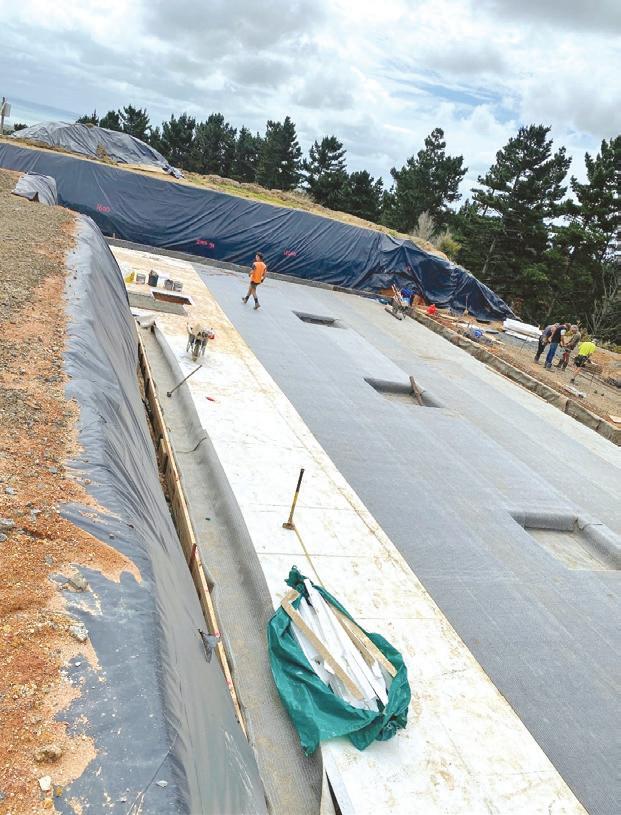



Whether you are a private individual, small business, or corporate organisation; we have significant specialist experience and strong backgrounds in various areas of the law, to be able to assist you.
LEGAL SERVICES
• ASSET PROTECTION
• CIVIL LITIGATION
• CONVEYANCING
• FAMILY LAW
• ELDERLY LAW
• RELATIONSHIP PROPERTY LAW

What you need to know about the new product information requirementsBy Ben Mitchell, a solicitor from Auckland law firm Martelli McKegg
If you manufacture, import, advertise, or sell products in New Zealand that are used in construction, you will need to make sure to comply with the new product information disclosure requirements imposed by the Building (Building Product Information Requirements) Regulations 2022 (Regulations).
What products do the disclosure requirements apply to?
The disclosure requirements imposed by the Regulations apply to “designated building products” of which there are two classes.
The first category (Class 1) is a building product that:
• Is mass produced or is produced in batches to a general specification; and
• Is available for wholesale or retail purchase; and
Unfortunately, the Regulations do not define “building work”. However, it is likely this will be interpreted to be consistent with the expansive definition under the Building Act 2004.
• Is new (and not used); and
• When used in building work, may affect whether the building work complies with the building code; and
• Is not a product of a kind described in regulation 7.
The second category (Class 2) is a building product that:
• Is based on a line of products where each unit is customised to the specification of the client; and
• Is new (and not used); and
• When used in building work, may affect whether the building work complies with the building code; and
• Is not a product of the kind described in regulation 7.
Although the Regulations establish two classes of captured products, the first and essential question to be asked is, if used in building work is, how likely will the product affect how the building work complies with the building code?
If the answer is that the product “may” affect how the building work complies with the building code, it is very likely the disclosure requirements of the Regulations will apply.
Unfortunately, the Regulations do not define “building work”. However, it is likely this will be interpreted to be consistent with the expansive definition under the Building Act 2004.
The use of the word “may” is of crucial importance. It suggests that the threshold is low and if there is a chance, it is very likely the product will be captured.
The Regulations do helpfully provide some examples of captured products. However, it does need to be noted these are just examples.
In terms of Class 1:
• Cladding products
• Mechanical fixings
• Insulation products
• Internal lining products
• Roofing products
• Structural wood-based products
• Structural steel and reinforcing products
• Sanitary plumbing and drainage products, including tapware. For Class 2, just one example has been provided. This being “external window joinery and doors that have been customised to the specifications of individual clients”.
The type of information that you will need to disclose depends on whether the product falls into Class 1 or Class 2.
Undoubtedly, there will be some products that will clearly be captured, such as the above examples. However, for other products, it is less clear.
For example, while some paint could be said to be purely aesthetic, other types of paint provide important waterproofing qualities that certainly affect how building work will comply with the building code.
If you believe your product may be captured, the next question to ask is whether the product is excluded under regulation 7 of the Regulations. These excluded products are:
• A building product which has a product certificate registered under s 272A of the Building Act 2004
• A temporary building product that does not form part of the building when construction is complete.
The example given is a barrier used during demolition or construction
• A building product that is - A gas appliance or fitting (within the meaning of s 2(1) of the Gas Act 1992).
- An electrical appliance or fitting (within the meaning of s 2(1) of the Electricity Act 1992).
While it might be appealing to look into obtaining a product certificate under section 272A of the Building Act 2004, this does come with significant administrative hurdles and cost. Whether it is worthwhile to obtain a product certificate would need to be a separate article. However, it could certainly be the case
that if the product justifies it, a product certificate could be an option.
When do the disclosure requirements apply?
The disclosure requirements imposed by the Regulations apply to “designated building products manufactured in, or imported into, New Zealand,” from (including) 11 December 2023.
While this suggests there is still some time for people who merely sell building products that were manufactured or imported into New Zealand before this date, those products will soon be sold and replaced with captured products.
If you manufacture or import into New Zealand a captured product, the disclosure requirements already apply.
Who is responsible for what in relation to a captured product?
The requirements imposed on you depend on which category of “responsible person” you fall into. Again, there are two categories.
The first category (Category 1) is a person living, or incorporated, in New Zealand, that is the manufacturer or importer of the captured product. This category is responsible to:
These requirements need to be complied with before the captured product is ordered for supply by a wholesaler, retailer, or other distributer of the captured product.
These requirements need to be complied with before the
captured product is ordered by a client.
Regardless of whether you may fall into Category 1 or Category 2, there are going to be significant practicality difficulties in complying with the above obligations.
What information needs to be disclosed?
As noted above, if you fall into Category 1, you are required to “collate and produce the required product information.” However, even if you fall into Category 2, the type of information that needs to be collated and produced may be of concern to you and your business.
The type of information that you will need to disclose depends on whether the product falls into Class 1 or Class 2. Unfortunately, the lists are too long to repeat in full but they both relevantly include:
• A description of the captured product (including the name of the product and its intended use).
• Whether overseas or in New Zealand, the legal and trading name of the manufacturer or manufacturers, including its address/addresses, its internet site (if any), its public email (if any), its NZBN (if any).
• Likewise, if the captured product is imported, the information immediately above is required for the importer.
• A statement specifying the clauses of the building code that are relevant, with

a statement of the captured product’s intended scope and use.
• How the captured product is expected to contribute to the relevant clauses of the building code.
• Information on the limitations of the captured product.
• Installation requirements
• Maintenance requirements. Although this is not a comprehensive summary of both lists, it should give a good idea of the extent of the information that will need to be disclosed.
There are consequences for non-compliance. Under s 362VB of the Building Act 2004, if you, “in trade”, supply, offer to supply, advertise the supply of, or import into New Zealand for the purpose of supply, a captured product under the Regulations, you can be convicted of an offence and liable, in the case of an individual, to a fine not exceeding $10,000, and in the case of a body corporate, to a fine not exceeding $30,000.00.
Someone asked me what do i do with all this stuff, well its a long story but - metal recycling is the recovery and processing of recyclable metal products.
The value of the products depends on the actual material and the difficulty in separating the different materials.
For Example, cars can be recycled but only about 80% of modern cars is able to be recycled and even then there is a cost. The upholstery is mostly not able to be recycled and goes to landfill after it is sorted from the recyclable materials, even the engine
which contains steel, Aluminium, oils, and plastics has to be separated before it goes to the smelters. For example, oils are removed and recycled to make new oil-based products.
We even recycle the tyres, however, the cost to do so is so much more than the end products are worth.
At Tin Men Scrap Metals we do everything we can to reduce the need for any product to go to landfill.
• Demolition - Residential and Commercial
• Asbestos Removal and Control
• Scrap Metal Removal
• Transportation of Scrap Metal
• Cars - Any Condition
• Scrap Metal Bins
• Digger Hire and Driver
• Labour Hire



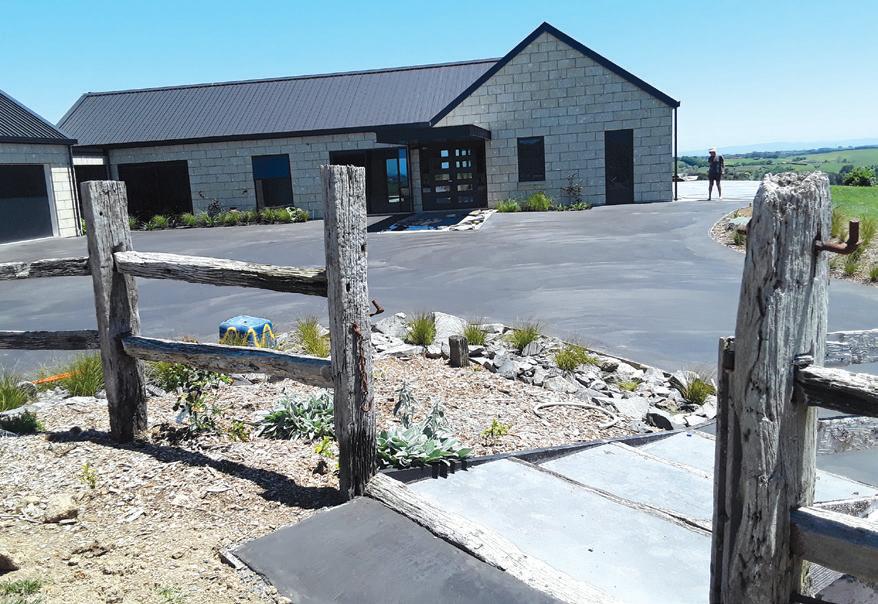
Are you finding yourself struggling to secure enough work for your team? Or maybe you’ve noticed that the amount of confirmed work booked ahead is shrinking?
When work starts to dry up, it affects the bottom line. Do you start discounting to get the work or wait it out till things get better?
It’s a situation some tradies are facing right now, and it’s not easy. But before you start slashing prices here are a few things to consider.
Profits and margins can disappear alarmingly fast once you start cutting your prices, and here’s why.
Let’s say your gross profit margin is around 20 percent. If you reduce your prices on a job by 10 percent, the volume of work you need to complete just to maintain the same dollar profit increases significantly.
For example, if your break-even point is $100,000 per month at a gross profit margin of 20 percent, and you reduce your prices by 10 percent you now need $200,000 of work to reach break-even. That’s twice the work, time, and effort, for the same result you were previously getting.
It’s a stark reminder that while reducing prices might seem like a viable strategy to attract more jobs, the impact on your bottom line can be significant.
Not only does it increase your workload, but it also puts a strain on you and your team, sometimes compromising quality. Too many rushed jobs that go wrong can also affect your reputation.
Target Gross Margin could be anywhere between 20 to 60 percent, depending on the trade and your position in the market. High or low end.
I don’t like to see anything under 20 percent minimum in any trade; less than 20 percent is too difficult to make a profit. If you want some help to work out your target gross margin and where you should be for your business, then check out
When work starts to dry up, it affects the bottom line. Do you start discounting to get the work or wait it out till things get better?
It’s a situation some tradies are facing right now, and it’s not easy. But before you start slashing prices here are a few things to consider.
So, before you consider cutting your rates, crunch the numbers and understand the real impact on your business’s profitability.
What’s your target gross margin?
Understanding your target gross margin is crucial in determining which jobs are worth your effort. Your target gross margin is the percentage of profit you aim to make on each job after all direct costs, including wages, are subtracted. This margin should be high enough to cover your business’s overheads plus a healthy profit.
the “Pricing Strategy Session” at the end of this article.
Having a clear target gross margin is like having a compass in the wilderness. Once you know where you want to head you can see clearly if you are going in the right direction and adjust. No more wasted money, time, and energy taking jobs that lose you money.
Your large client wants a better price, what now? Don’t just take this at face value. Test, question, negotiate. Why do they think
the price is too dear? What are they comparing their quote to, apples with apples or apples with bananas? Is there more in their budget or can you adjust the brief to fit?
Show them that your price is good value and see what happens next. Some will get it and some won’t, that’s ok. The ones that don’t, fine just move on to the next opportunity. Eddie, a mentor of mine, would tell me “15 percent of customers will always go for the cheapest option no matter what”.
If another option is one dollar cheaper, they will take it even if the job is half as good. The clients you want are the other 85 percent who care about getting a quality job done right, hassle-free and are prepared to pay for it.
Remember, pricing isn’t just about numbers; it’s a mind game. The right way you present your pricing and value can make all the difference in attracting the right kind of clients and getting the work.
When my clients start telling me they are sticking to their rates, margins are increasing, and they now have plenty of good work lined up. That they don’t need every job that comes their way. I know they are on track.
Are you fishing in the right river?
Fishing is about being in the right place at the right time. The
right bait at high tide will catch way more fish than at low tide when the fish aren’t around. It’s the same with your business, are you marketing in the right places? Are you seen as the specialist or a generalist who does a bit of everything? The specialist attracts better clients and can charge more. That’s less work and more profit for you.
Being the cheapest is dangerous.
If your business is based on being the cheapest, that’s a problem. Firstly, you won’t be getting the margins you need and there will eventually be someone else out there who will do it even cheaper.
A builder client Celeb of The Decking Guys, was in the same predicament. He was working 80 hours per week making no money with one part-time worker and struggling to find work. His clients kept asking him for lower rates. I told him to put his rates up and start specialising.
Within 12 months he had a team of 11 and plenty of work. Check out his story on our testimonial
page at: www.nextleveltradie. co.nz/real-results.
More options, better odds
If you are relying on getting one quote or you can’t pay the bills, you need the job so the pressure is on you. You are in a weak position and are more likely to cave on price to get the work.
A much stronger position would be if you have five other quotes you are following up in the same week with three to six months of work already confirmed. Now you are calling the shots.
If a new client is relying on a small number of quotes and doesn’t have enough work. The first thing we do is help them get their pricing right and find better jobs. This takes the pressure off and puts them back in control of their business.
Don’t waste a good opportunity!
If things are on the quiet side and you’re still not getting the work you want, then this could be the opportunity to
consolidate and scale back a little.
Move any bad eggs on and rebuild stronger. Better to have a bit less work for a while rather than working your tail off and going backwards.
If you still want to reduce your rates to get a job short term to pay the bills then ok. But make sure that this is a short-term strategy and use it as motivation to position the business better so that you’re not caught out next time.
Sometimes in a downturn, there will be less work for a while. The key here is to keep the business solid and profitable while looking for better opportunities which, in long term, is not cutting prices.
Are you worried that your pricing isn’t right compared to others in your industry or that you need to get more profitable work?
Book our free 45 minute “Pricing Strategy Session” at: www. nextleveltradie.co.nz/nextstep.
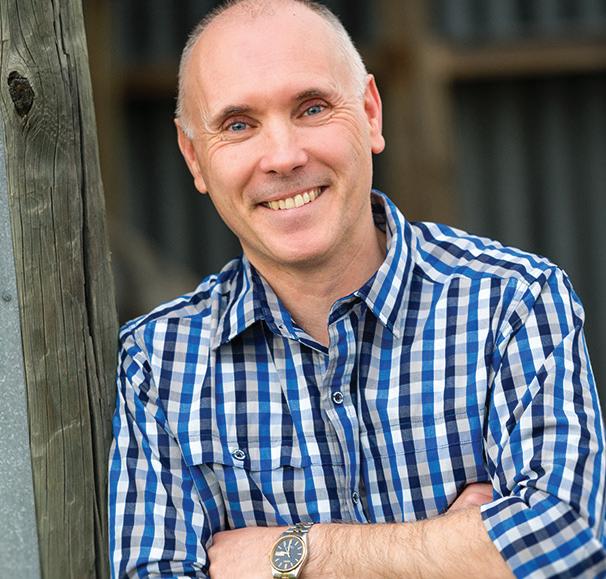



at
Scape

We have vast experience when it comes to managing domestic and commercial waste. We focus on making it convenient for our customers to get rid of all kinds of rubbish.
We deliver and pick up trailers and skip bins
Flexible delivery times
24/7 availability
3M, 4.5M, 6M,7.5M, 9M bin capacity available we can help you load if required (some conditions apply)
*Winz Quotes and Afterpay available
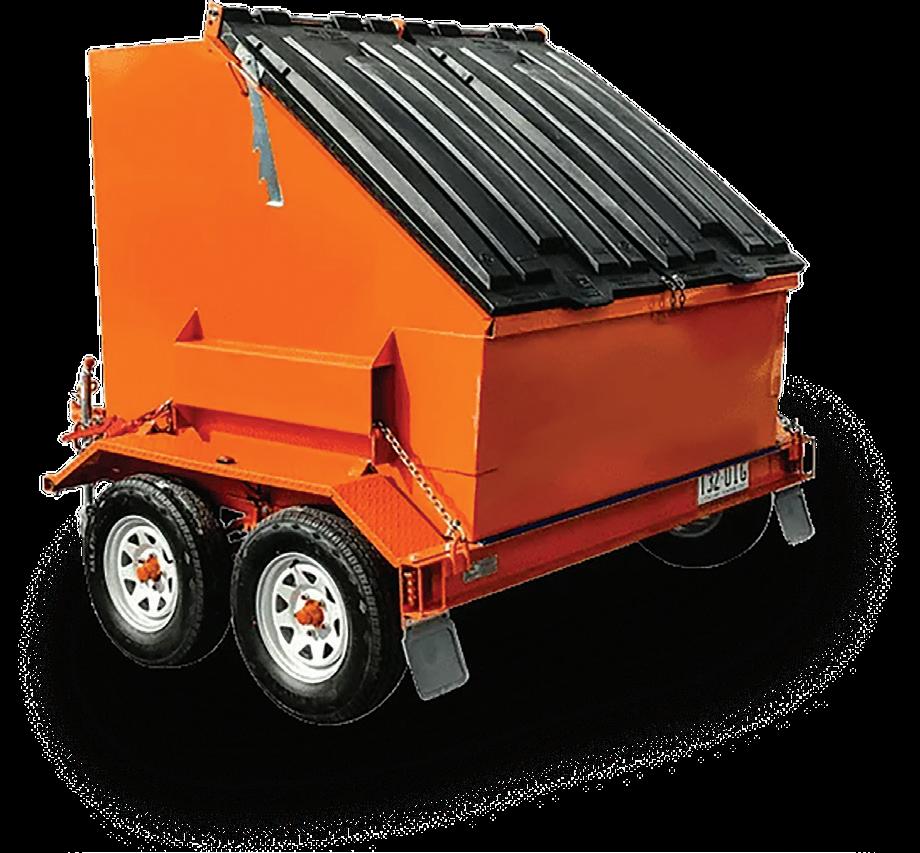
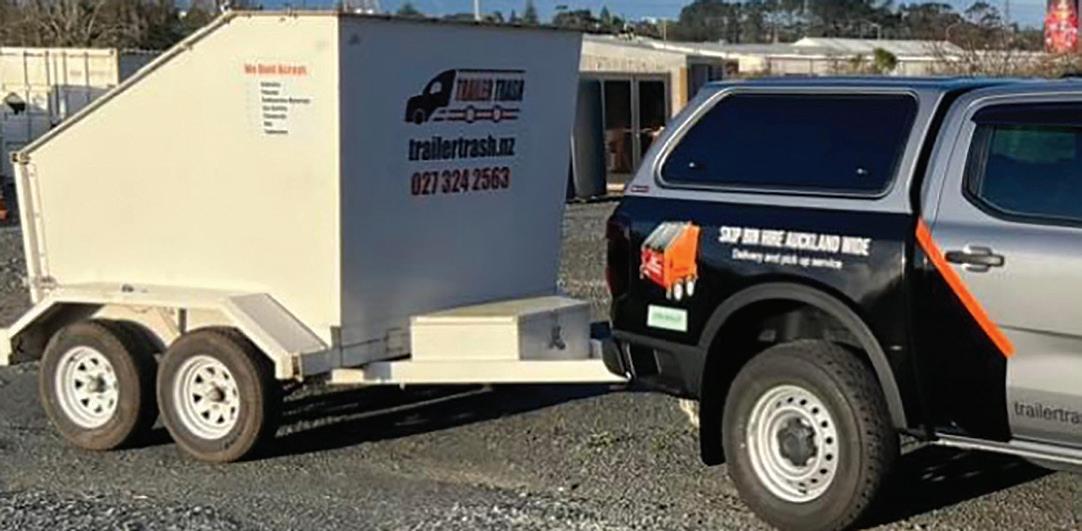


New Zealand has an affordable housing shortage, yet developing higherdensity housing is opposed by many Kiwis. For architect, author, and lecturer Guy Marriage, the case for denser urban living is evident.
When the National Party withdrew its support from the bipartisan housing density agreement with Labour last May, many urban centres entered planning purgatory.
National then proposed its policy allowing councils to opt out of Medium Density Residential Standards (MDRS) and instead zone greenfield land for 30 years of development. The Greens said National’s plan promotes urban sprawl, damaging the environment.
Cut to December, when the Christchurch City Council took advantage of the change in government by considering a pause in housing intensification plans.
Public hearings on the Housing and Business Choice Plan Change – also known as Plan Change 14 – are currently postponed to allow more time for clarity from the Government.
The move injected uncertainty into the planning processes of city councils nationwide, uncertainty that only delays housing crisis solutions. As housing density is tracked
By Ben O’Connelllocally by councils, data is tricky to come by.
Still, political moves signal an increasing trend in medium and high-density housing, as does the nationwide increase in residential building consents.
Accepting housing density measures is inevitable, but what’s the best way to do it?
“Build more densely, build off-site, build more intelligently, build for the long-term,” says Guy Marriage.
“As an architect and co-founder of the award-winning First Light Studio, a senior lecturer at the Wellington School of Architecture, and the author of three internationally acclaimed books, his advice is priceless.
Our long-term model of one builder, one ute, one house at a time is rubbish, outdated and needs to stop.

“Prefabricate whole sections or parts of buildings, doing all the tricky work safely at ground level and then hoisting the completed object into space.”
According to a recent Forbes article, prefab builds are more common in countries like Japan, Sweden, and Germany than here. They account for around 84 percent of Swedish homes, compared to 10 percent in New Zealand.
“Our long-term model of one builder, one ute, one house at a time is rubbish, outdated and needs to stop.
“We build these suburban houses stick by stick, out of kiln-dried timber, and then let it all get wet in some inevitable storms, and then we nail on plasterboard, which really just wants to act as blotting paper, and then slap on a tiny thin cladding layer and wonder why it all starts going sour.”
It undeniably costs more to build better, but Guy says cheap housing inevitably turns nasty.
He envisions factories producing houses that roll off their production line and are taken to site, a New Zealand where we are not afraid to pay the full cost for the best possible builds. It’s about building for the long term, not for short-term financial gain.
“The problem is that we are getting cramped, low-density rather than spacious high-density,” he says.
“Filling up a section with townhouses, carparks, and nothing else just makes
everyone miserable in the long term. Instead of building townhouses on the outskirts of every town, we would be far better to rebuild our central cities, building housing of a sensible height near the middle.”
Innovative building solutions are the future, but it takes time for big ideas to be accepted. Guy wants to do a mediumdensity housing project with cross-laminated timber (CLT) on a large urban scale. “But New Zealand is still a bit too timid for that. It’ll come. I’ll wait.”
Ultimately, housing density decisions all come down to the price of land. Cheap land means suburban sprawl and maximising expensive land means denser housing.
“It is no coincidence that the best, most inventive housing in the world comes from the places where land is constrained, rather than just from places where sprawl is unlimited. Hong Kong, for instance, is far more
There is, unbelievably, still a mentality amongst some people that you have to live in the suburbs to raise your children.
Not so. Children raised in urban areas turn out just as well, if not better.
interesting than Houston.”
Many factors contribute to the current housing density issues our country faces. New Zealand has one of the lowest population densities yet is one of the world’s most urbanised nations; around 85 percent of Kiwis call a city home.
Increased density lowers the cost of each unit and the need for infrastructure. Suburban sprawl also means more time wasted in traffic.
Despite being long and thin, Aotearoa has the eighth most cars per capita, on par with the United
States, Canada, and Australia. “It is just that they all live spread out in endless, boring suburbs,” Guy says. “We have these massively wasteful cities, spread out for miles, and the infrastructure of pipes and roads and wires all costs millions.
“There is, unbelievably, still a mentality amongst some people that you have to live in the suburbs to raise your children. Not so. Children raised in urban areas turn out just as well, if not better.”
Warmth, humidity, mould, sound, and fire safety are a few
characteristics of housing density that can be just as good—if not better—in an apartment as in a suburban home.
Guy says we need to build, design, and live in our homes better: opening windows to air out spaces as one example.
Guy advocates for multigenerational buildings higher than two storeys tall, with better quality, higher-density designs, and people-friendly common outdoor spaces. The Coronavirus pandemic showed architects how vital access to outdoor space for all is, with balcony access at a minimum.
Some people argue against increased housing density because of the loss of green spaces, but Guy says building denser actually saves the outdoors from despoliation.
“One of my favourite examples is Sienna, Italy. It was at war with
Continued on page 22

Florence and other city-states for hundreds of years, and so they lived within the city wall in intense urban conditions, just as they have done for the last 500 years.”
“Meanwhile, you can look out over the edge of the city wall and down below, there is a vineyard growing grapes that feed the city.
“There’s no suburbia. It is either urban or rural, and nothing in between.” Italians today are as passionate about their lives within the city walls as their ancestors were centuries ago.
Helping people lead passionate lives is precisely why social housing is important. Without great design and an affordable price, families cannot plan their lives for the long term. People need to feel invested in their accommodation to envision
future opportunities, let alone realise them.
Particularly impactful, Guy commends Kainga Ora redevelopment projects in Auckland. Funding from the Government and Wellington City Council for a complete overhaul of city housing blocks is also promising. Only time tells how successful social housing initiatives are though.
And yet Christchurch notably lags. Guy describes the recent suburban townhouse sprawl in Ōtautahi as horrible, cramped, and scattered around the city like litter. The domino effect from the 2011 earthquakes and subsequent rebuild continues.
A side effect of housing people quickly post-quake is suburbs devoid of community and personality. Intensifying density
Filling up a section with townhouses, carparks, and nothing else just makes everyone miserable in the long term.
Instead of building townhouses on the outskirts of every town, we would be far better to rebuild our central cities, building housing of a sensible height near the middle.
would stop the “dull wave of boring housing sweeping the city,” Guy says.
“Christchurch has been rightly scared off medium density because of the terrible housing that “those” developers have created. You know who I mean.
“They only have one plan, and they rubber stamp it en masse
all over town, and it is a mess. Everything is two storeys tall, everything is the same, and only the paint colour changes. And not everyone lives in a nuclear family.
“But build taller: three, four or five floors, get a mix of household sizes in, so you have single people, grandparents, whole families, students,


workers, retirees, children. We need the whole mix of people to get a community going.”
Guy remains hopeful about the future of housing density intensification in New Zealand. He thinks Christchurch could be the perfect cycling city with the proper infrastructure, like Hastings, which sprawls across some of the best orchard land “ in the country.
“We need far better thinking around the places that we say are okay to live in. Don’t build housing on your best horticultural soil!”
As for Guy’s advice to builders and architects, don’t try to reinvent the wheel. “Don’t swamp a city with bland twostorey housing: hire the best architects and design housing
that addresses the land first. “Plan the open spaces first, and then plan the housing to surround those open spaces. Think about the world’s best cities and then think about their parks.”
Guy’s three books demonstrate growing interest and development in the housing density space. Now a seminal textbook for students worldwide, TALL - the Design and Construction of High-Rise Architecture (Routledge, 2019) covers the rationale behind tall office building design.
His second book, Modern Apartment Design (Routledge, 2022), is focused on the growing interest in constructing tall timber buildings for residential living. Guy says that when done well, apartments are superior above all.
Done poorly, and they become hell. Think noisy, loud neighbours and cramped, poorly-designed spaces. His latest research project – Medium (EBOSS, 2022), explores creative solutions for living denser and better. Think courtyard houses like the Romans had 2000 years ago, but updated for today.
“Do you know they had apartment buildings back then?” he asks. “The Romans called them insulae, meaning islands, because they rose out of the humdrum dross of the city of Rome. There is nothing new under the sun, really.
“So, let’s repeat it, only do it better this time. Make it more earthquake-resistant, for starters!”
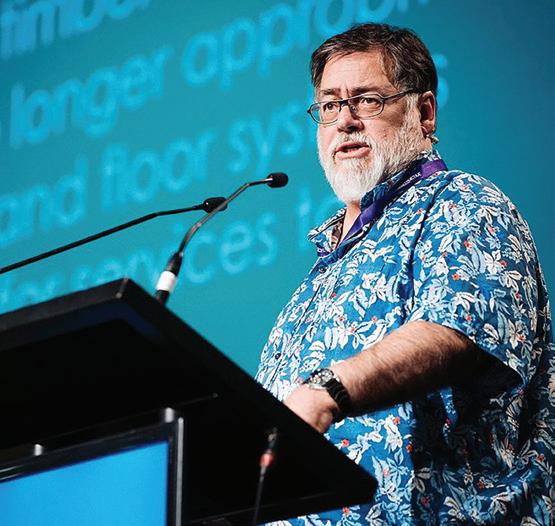






The Bolt Shop was established in 2000 under the direction of Director Geoff Smith with a wealth of fastening and technical experience. The team is prepared to support you with your project requirements and take on challenging issues.
The University of Auckland Formula SAE Team and its F:SAE:47 Projects are proudly sponsored by The Bolt Shop Team.
As Child Safety Advocates, we also support the New Zealand Police Managers Guild Trust.
Our Products:
• Mild Steel Bolts
• High Tensile Bolts
• Tapping Screws
• Rivets
• Nuts
• Machine Screws
• Threaded Rod
• Socket Head
• Drills
• Hardware
• Stainless Steel Bolts
• Washers
• Wood Screws
• Masonry
• Taps & Dies
• Consumables
• Tools
Glenfield
191B Archers Road, Glenfield, North Shore City
Phone: 09 441-9425
Mon-Fri: Open 7:30am to 5:00pm Sat: Open 8:30am to 12:00pm gfsales@boltshop.co.nz
Wiri
23 Ash Road, Wiri, Auckland City
Phone: 09 262-2944
Mon-Fri: Open 8:00am to 5:00pm
wirisales@boltshop.co.nz
Two research papers from the New Zealand Infrastructure Commission, Te Waihanga, provide baseline information on New Zealand’s infrastructure workforce and show how global and local factors impact on labour and material costs in infrastructure construction.
Who’s working in infrastructure? A baseline report
This report provides the first comprehensive baseline analysis of New Zealand’s infrastructure workforce.
“You can’t plan for the future if you don’t have a sense of the size and make-up of your current workforce,” says Te Waihanga director of Economics Peter Nunns.
“We wanted to know how many people work in the infrastructure sector and what sort of work they’re doing. We also wanted to understand who’s working in infrastructure, so we looked at factors like age, ethnicity, gender, training, and migration.
“We found that the infrastructure workforce is large and complex, with over 100,000 full-time equivalent workers spread across more than 100 distinct occupations. That’s around 4.7 percent of the total New Zealand workforce,” Peter says.
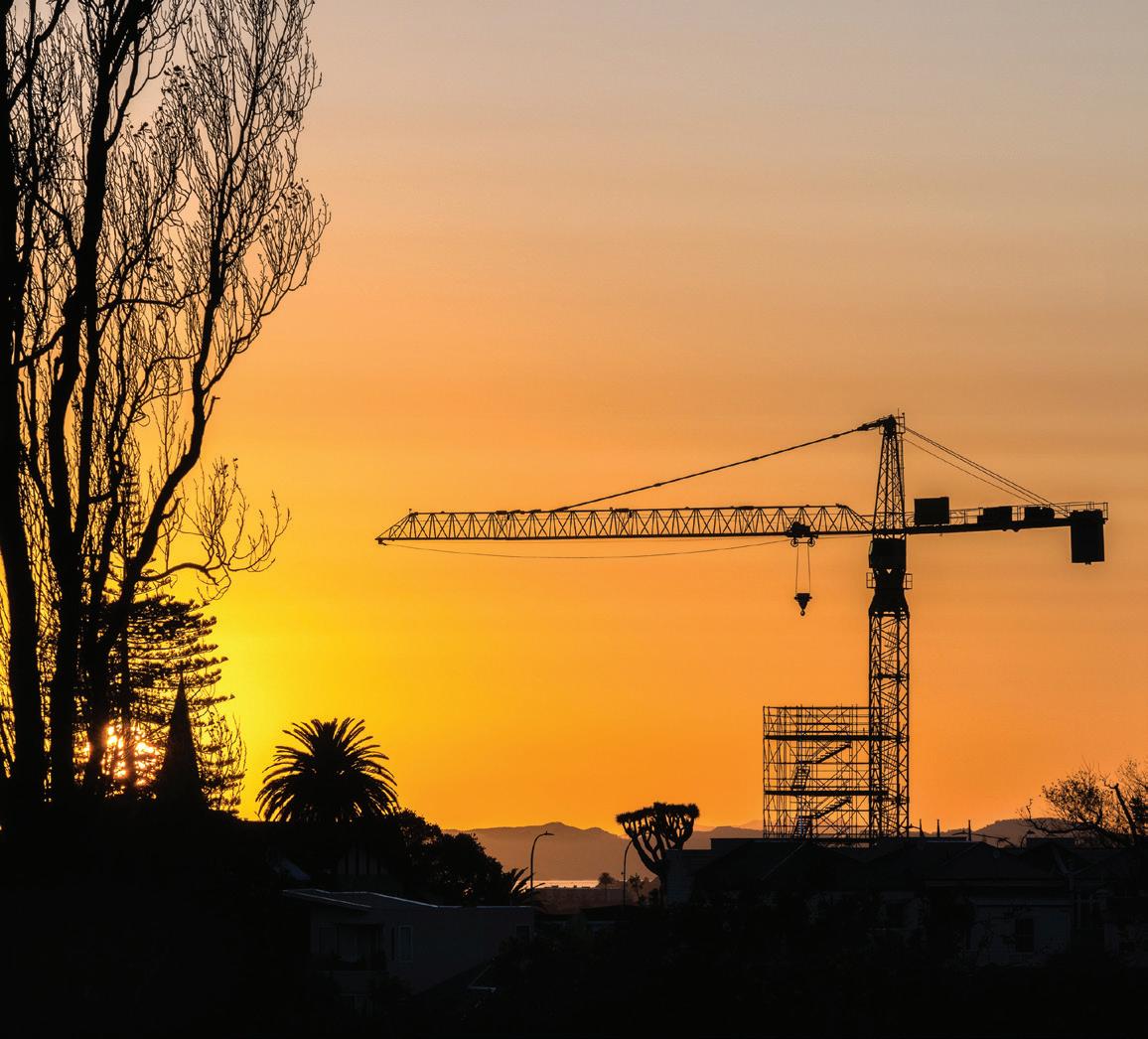
“We often think about infrastructure work as mainly about new builds, but this actually accounts for less than half of the workforce.
“We estimate that around 14 percent of infrastructure workers are engaged in planning and design, 46% are constructing new assets, and a further 40 percent of infrastructure workers are engaged in asset management and maintenance. These roles are essential - you can’t build something without planning and designing it first, and once it’s built you have to maintain it.”
The findings also shed light on who is working in infrastructure and the pathways that they follow into the workforce.
Ethnic diversity within the infrastructure workforce is
similar to the overall New Zealand population, but the ethnic mix is uneven across occupational categories. For instance, labourer occupations have a higherthan-average share of Māori and Pacific workers, while professional occupations have a higher-than-average share of European and Asian workers.
Women account for only 11 percent of the total infrastructure workforce compared to around 47 percent of the overall New Zealand workforce. Moreover, younger age cohorts have a similar share of women as older age cohorts, suggesting that gender balance won’t change as older workers retire.
“This data will help us identify where we will face capacity pressures and how we can respond to them by
sequencing work better and training and recruiting new workers. It also highlights increasing gender and ethnic diversity as a key opportunity for lifting our capacity to build infrastructure,” Peter says.
Why do construction input costs change? The role of global and local factors
A second paper published by Te Waihanga looks at past changes in construction wages and prices for five key infrastructure construction materials, shining a light on projects often cost more than expected.
“We analysed several decades of price data for construction inputs to understand how they are affected by both global and local factors,” Peter says.
“We found that infrastructure providers have limited control over their input prices. Price changes mostly reflect the impact of things that are happening outside of the New Zealand construction sector.
“For labour costs, we found that construction wages closely track wages elsewhere in the New Zealand economy. In the short term, high demand for construction workers can push wages a bit above this trend, but construction wages tend to return to trend within two years,” he says.
“Global factors are the primary driver of material prices, especially for traded
commodities like structural steel, timber and diesel fuel. Changes in global prices flow through to New Zealand very quickly.
Even when we produce or source some materials here, prices are still based on global markets,” he adds.
“The exception is materials like concrete and aggregates that are too heavy to ship long distances. Regional factors, like limits on setting up new quarries near major projects, are likely to play a stronger role for those materials.”
The findings of this report build upon earlier research by Te Waihanga that looks at infrastructure construction productivity and infrastructure delivery cost benchmarking.
“Understanding what drives infrastructure costs allows us to better plan and mitigate risks and get more infrastructure for the money we spend.
“While labour and material costs are hard to control, there are some levers we can pull. Infrastructure providers and decision-makers can focus on driving productivity in construction and optimising projects’ scope and design to ensure that we get the most bang for our buck.”
Key findings from the reports. Who’s working in infrastructure?
A baseline report
• In 2018, the infrastructure workforce included an estimated 108,000 full-time equivalent workers. This is around 4.7 percent of the overall New Zealand workforce. These workers are split evenly between ‘horizontal’ infrastructure like roads, water pipes, and electricity transmission, and
We found that the infrastructure workforce is large and complex, with over 100,000 full-time equivalent workers spread across more than 100 distinct occupations. That’s around 4.7 percent of the total New Zealand workforce.
‘vertical’ infrastructure like schools and hospitals
• Constructing new projects accounts for less than half of the workforce. We estimate that around 14 percent of infrastructure workers are engaged in planning and design, 46 percent are constructing new assets, and a further 40 percent of infrastructure workers are engaged in asset management and maintenance
• Mobility from other sectors is more important for ‘blue collar’ roles and migration is more important for ‘white collar’ roles. Professional and technical occupations include a higher share of migrants.
These occupations are more likely to have university qualifications. Machinery operators and drivers and labourers are less likely to be
migrants, and more likely to have moved between industries in recent years
• The infrastructure workforce is ethnically diverse, but women make up a small share of the workforce. The overall infrastructure workforce has a similar ethnic makeup to the New Zealand population, but ethnic mix is uneven across occupational categories. Only 11 percent of infrastructure workers are women. Female participation is only marginally higher among younger age cohorts, meaning that this pattern is unlikely to change as the workforce ages.
The role of global and local factors

• New Zealand economywide factors are important for understanding labour cost fluctuations but not material costs. Wages in construction track wages elsewhere in the economy. For material prices, we find little evidence that increased investment or strong economic conditions in New Zealand drive higher prices
• Global factors play a significant role in material price fluctuations but not | labour costs. Key material prices are correlated across countries, particularly for tradeable materials. Global commodity prices are highly predictive of our material prices, especially for structural steel, timber, and diesel fuel. Conversely, construction wages in New Zealand do not appear to be affected by Australian construction or economy-wide wages
• Prices for both materials and labour adjust quickly. When construction wage growth is faster or slower than economy-wide wage growth, the gap is closed within a couple of years, rather than decades. For materials, changes in global prices are reflected in New Zealand prices almost instantly.
• Industry-specific factors play a modest role for labour costs and a possible role in material prices. An especially tight labour market for construction workers may drive modestly higher construction wages temporarily, but not in the long run, as higher wages draw in more workers. For materials, local or industry-specific costs like transport costs or regional demand could put pressure on prices.
Elevate your construction site’s safety and compliance with Aculog Scaffold Safety Signs – your premier partner in safeguarding scaffolding operations.
Aculog stands for “Accurate Log” – a testament to our commitment to providing an accurate record of progress and performance. At Aculog, we specialise in providing innovative, durable, and highly visible safety signage solutions tailored to the dynamic needs of the construction industry. Our commitment to excellence and safety is unmatched, offering an extensive range of scaffold safety signs, tags and accessories designed to enhance on-site communication and prevent accidents.
Our products are engineered for resilience against harsh outdoor conditions, ensuring long-lasting performance and reliability. From scaffold status tags that offer real-time updates on inspection and maintenance to safety signage that clearly communicates potential hazards and operational instructions, Aculog has everything you need to maintain a safe and efficient work environment.
Our safety signs and systems are easy to install,

compatible with various scaffolding types, and designed to streamline safety management processes. Whether you’re managing a small renovation project or a large-scale construction site, our solutions are scalable to meet your specific needs.
Investing in Aculog Scaffolding Safety Signs means choosing peace of mind, with products that comply with industry standards and regulations.
Our user-friendly website makes it simple to browse, customise, and order the safety signs and accessories you need to keep your site safe and compliant.
Choose Aculog for a safer construction site. Discover our full range of scaffold safety solutions and take the first step towards a safer, more efficient workplace. Visit us at www.scaffoldsafetysigns.co.nz

3
3
3
3
3
3
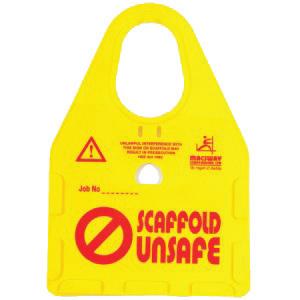


Protect your projects with Shrinklad Ltd, your trusted partner for professional shrinkwrapping services in Auckland city.
We offer a comprehensive range of shrinkwrapping solutions tailored to meet your site’s unique needs.
Our Services
• We specialise in commercial and industrial shrink wrapping, providing robust, durable solutions that stand the test of time
• Our expertise extends to residential wrapping services, offering protection and enhancements to your property.
• We provide marine storage solutions, ensuring your
valuable assets are kept safe from the country’s harsh, tropical elements
• We offer other storage wraps, providing versatile and effective solutions for a variety of needs.
We believe in building long-term relationships with our clients, and we strive to exceed your expectations every time.
Our Team
• Our team of fully trained tradespeople bring a wealth of experience to the table, ensuring every project is completed to the highest standards.
• We understand that every project is unique, and we tailor our services to meet your specific needs, ensuring satisfaction and value for money.
Our Commitment
• We are committed to quality and customer satisfaction. Our successful track record speaks volumes about our dedication to excellence.
• We leave your site ready for work, ensuring minimal disruption to your daily operations.
Choose Shrinklad Ltd
• We are not just about wrapping; we are about providing solutions that add value to your business.
• We believe in building long-term relationships with our clients, and we strive to exceed your expectations every time.
• Contact us today to discuss your shrink-wrapping needs. Let us help you achieve your business goals with our professional and reliable services.
Don’t let your project wait. Choose Shrinkclad Ltd., and let us help protect your project. Contact us today or visit our website for further information at www.shrinkclad.co.nz




In times of trouble, people often wish they had paid more attention to risk management to avoid getting into a dispute.
While there are differences between disputes in commercial as opposed to residential building the fundamentals are much the same. Paying attention to the following four items will save you a lot of grief.
Most disputes are not about complex issues of law but about much simpler matters. Relationship problems caused by poor communication is usually top of the list.
Someone has been accusatory in their language, and someone becomes defensive. Walls go up and listening goes down.
Setting some rules about how you will strive to communicate is a good start.
• Email communication can be really harmful because often hastily written emails can easily be misinterpreted. You say something in an email that would not be said on the phone.
• Business should not be done in social media. There is still a place for letters to be sent as attachments. Establish guidelines for how and when to use email and text.
• Email should not be used to convey every thought as it arises. Texts should not be used where more formal communication is needed.
• Striving to be on friendly terms does not mean ignoring the terms of a contract. Learning how to have factual or difficult conversations in a neutral manner is vitally important.
• There is a tendency in the building industry for people to either put the contract aside, or worse still not reading it at all, and just doing things in a way that seems to be fair and agreeable.
That is not acceptable, and people often undermine their own rights and obligations.
There have been huge changes for the building industry to adapt to in the ast 20 years, but that rate of change is going to accelerate as we start to build more energy-efficient sustainable buildings and climate change makes economic conditions more difficult.
Insufficient knowledge is behind almost all disputes. Someone does not know something that should be part of their everyday work. All builders need to have an
It is common to find that each party in the contract has a different understanding of what is the highest priority of the project: time, cost or quality.
Keep an eye on the big four and njoy happier client and less trouble.
active and ongoing learning process for their people and even for the sub contractors they engage. If a sub-contractor does not share the values of the contractor or is not doing their job properly then this can be the source of dispute.
Training must go beyond health and safety inductions and events hosted by merchants. Workers need an attitude conducive to ongoing learning and an opportunity to learn in a way that is meaningful for them.
Learning difficulties are common in the building industry so that is even more reason to create learning programs that accommodate individual needs.
Unfortunately, signing a contract then putting it in a file and not reading it, is all too common. Contracts are just a summary of what has been agreed by the parties, the rules of the game, but it is very common in dispute situations to find that both parties went off on tangents

doing things that were never agreed or responding to issues in a way inconsistent with the terms of a contract.
Do not be intimidated by a contract and if you need assistance with understanding your rights and obligations under the contract, then obtain independent advice.
To conform to the terms of the contract is not “unfriendly” but good communication skills are needed to remind people of their rights and obligations.
The main terms of the contract also need to be known to site management not just head office. Managers should write simple bullet point summaries of the main things the contractor is obliged to do under the contract and ensure this is known by site management.
Issues like when a variation or extension of time is justified, how variations are to be claimed, what are the various event timeframes prescribed, under what circumstances can work be suspended are big issues that should be top of mind.
Having escalation procedures for when someone becomes overwhelmed is very important.
Be careful that you do not default to doing what you think is fair because others may not share that view and it may be inconsistent with the contract.
Excessive hurry is almost always a part of a dispute particularly undue haste to get a project started.
It is fatal for parties to rush into starting a project without both
When it comes to excellence in precast concrete, Nauhria deliver world class quality and innovative product solutions right here in New Zealand.
As market leaders of the precast trade, Nauhria’s team of 350+ readily support the architectural design community together discovering and developing innovative and effective solutions to overcome tomorrows construction challenges.
With a strong and proven track record in servicing commercial projects, Nauhria’s professional team of 350+ leverage their wealth of knowledge and experience to benchmark industry best practice while testing new innovative solutions
parties fully understanding the risk allocation and their rights and obligations.
If risks are not understood or all loaded onto one party this is a recipe for dispute. If the interests of the parties are not sufficiently aligned then time, cost or quality issues will arise. It is impossible to get the best of time, cost and quality. If quality and cost are genuinely the drivers for the project, then the project needs a realistic program. Unfortunately, irrational and unrealistic time expectations are at the heart of many disputes.
It is common to find that each party in the contract has a different understanding of what is the highest priority of the project: time, cost or quality. Keep an eye on the big four and enjoy happier clients and less trouble.

Steve Alexander has 25 years’ experience resolving building disputes. Visit: www.alexander.co.nz.
for modern energy efficient homes and infrastructure projects where time is paramount in so many ways.
Nauhria’s governing purpose is to “help build a great and safe New Zealand”. this ethos is evidenced in part through their commitment to R&D which has contributed to the successful improvements in precast technology including safer handling and better scientific understandings of both concrete manufacturing and product performance.
If your project is important to you, seek to engage with a caring, professional and certified precast manufacturer, contact Nauhria and arrange a visit to their new manufacturing facility in Papakura, South Auckland, and remember that… Together concrete can be beautiful!
Helping Build a Great & Safe NZ
Nauhria Precast is an integral part of New Zealand’s construction industry, manufacturing and delivering precast concrete components to the commercial, civil and residential construction sectors.







59 Druces Road, Auckland
of all






Supply legally compliant, permanent & temporary road signs for local, city & government as well as business & residential customers.







We are a New Zealand owned and operated business, focused on finding solutions to roading problems. We improve the world’s roads with great ideas!
Step into a world of comfort and warmth with Elite Insulation. We specialise in supplying and installing GreenStuf Insulation, a top-quality NZ-made product designed to moderate temperature and reduce sound.
Autex Industries manufactures this innovative product in Auckland, known for its commitment to quality and sustainability.
Our team of professionals, all accredited by Site Safe and IAONZ-qualified, ensures that your insulation is installed correctly and efficiently. We understand the importance of a well-insulated home and are dedicated to providing you with the best service possible.
Choosing GreenStuf Insulation is choosing quality. Made from 100% pure polyester, it eliminates the itchy fibreglass issue that often comes with traditional insulation materials. It is safe, user-friendly, and offers long-lasting, highly effective insulation. But the benefits don’t stop there. GreenStuf Insulation also helps reduce condensation, minimising the risk of dampness and mould in your home. This not only enhances

the comfort of your living space but also promotes a healthier environment for you and your family.
A well-insulated home is not just comfortable; it’s also a valuable investment. GreenStuf Insulation adds value to your property, making it a smart choice for homeowners and landlords alike. Plus, it’s the modern, eco-friendly way to insulate, making it a win-win for both you and the environment.
At Elite Insulation, we offer both installation services and
direct delivery throughout New Zealand. We pride ourselves on providing a quality service that gives you total peace-of-mind. Once you accept our quote, we guarantee an installation date within 2 to 3 weeks.
Don’t wait to experience the benefits of a well-insulated home. Contact us at 0508 222 4477 to schedule your installation or to learn more about our services. With Elite Insulation, you’re choosing quality, efficiency, and a healthier home environment.


Komatsu’s PC138 series of excavators, boosted by the company’s Retrofit Kit, are ushering in a new era of machine technology.
The Retrofit Kit (RFK) equips existing machinery with advanced ICT features, including 3D machine guidance, payload management, and 3D construction data collection.
With the RFK, conventional machinery can seamlessly transition into the realm of digital construction, enabling precise and efficient execution of tasks. This advancement is particularly exemplified by the RFK’s 3D machine guidance feature, which allows operators to dig accurately according to engineered design plans. Real-time notifications within the cabin ensure operators maintain alignment with design drawings.
Expanding the capabilities of machines like the PC138US-11 and PC138USLC-11 excavators, the RFK utilises highperformance sensors and antennas to accurately display the bucket’s position against design information. Operators can effortlessly adjust settings, record data, and switch between project files and attachments, enhancing versatility and productivity.
Moreover, the RFK facilitates seamless integration with Komatsu’s Smart Construction dashboard, streamlining data reporting and analysis. Operators can also create customised designs directly on the in-cab display, enhancing


The Retrofit Kit (RFK) equips existing machinery with advanced ICT features, including 3D machine guidance, payload management, and 3D construction data collection.
user experience and efficiency. In the event of technical support needs, Komatsu’s dedicated team is readily available to assist, ensuring optimal utilisation of the RFK’s capabilities. Another notable feature is the payload management system, which enhances safety and productivity by accurately measuring material weight and preventing truck overloading.
Overall, Komatsu’s Retrofit Kit represents a significant advancement in construction machinery technology, enhancing efficiency, productivity, and safety on job sites.
To find out more visit www.komatsu.co.nz




Less than a third (29 percent) of New Zealanders are satisfied with our national infrastructure, with flood defences receiving the lowest quality rating (18 percent) among different types of infrastructure and identified as the number one investment priority in the country.
A 31-country Ipsos Global Advisor survey found that New Zealanders are significantly less satisfied with the country’s national infrastructure compared to others around the world (global country average of 38 percent). This level of satisfaction is also a significant decrease from 2019 (46 percent).
The survey – carried out in 31 countries, by Ipsos in collaboration with the Global Infrastructure Investor Association – includes a sample of 1,004 New Zealanders. The survey came after a gap of nearly two years in the Global Infrastructure Index series, and almost three years since a New Zealand report was last published in Nov 2019. Fieldwork was conducted in May-June 2023.
A 31-country Ipsos Global Advisor survey found that New Zealanders are significantly less satisfied with the country’s national infrastructure compared to others around the world.
The majority of New Zealanders (61 percent) believe that the country is not doing enough to meet its infrastructure needs. And in addition to flood defences (57 percent), new housing supply (51 percent) was also identified as the highest priority areas for investment.
Our view of the quality of many of our infrastructure has decreased significantly since 2019. These include flood defences (18 percent rated as very / fairly good), rail infrastructure (35 percent), local road network (38 percent), motorway / major road network (46 percent), water supply and sewerage (57 percent) and airports (75 percent).
However, New Zealanders’ ratings of the quality of our renewable energy infrastructure and electric vehicle charging infrastructure are higher than the global country average.
Like others around world, only a minority of New Zealanders (30 percent) support increased public spending to improve infrastructure, while the majority is of the view that there is already too much public spending, and that taxes and government borrowing should not be increased any more.
Notably, however, New Zealanders have a more longterm outlook than the global country average – we are significantly more likely to agree that higher priority should be given to improving infrastructure in the long-term than minimising the cost to consumers and taxpayers in the short-term (45 percent, cf. 37 percent global country average).
While New Zealanders are more likely to prioritise environmental impact (41 percent) over economic impact (35 percent) in making decisions about how to improve infrastructure, the
contrast between the two is lower than the global country average (47 percent environmental, 29 percent economic).
Ipsos New Zealand managing director, Carin Hercock, says “The impact of extreme climate change related weather events has seen a significant increase in New Zealanders who want infrastructure investment in the directly related area of flood defenses and directly impacted areas such as roading however, investment in infrastructure that will help reduce carbon emissions over the long term, such as sustainable energy sources and cycleways are further down the list”.
Amanda Dudding, Research Director, Public Affairs, Ipsos New Zealand, added that “The recent extreme weather events have made New Zealanders look at their national infrastructure in a different light. It has highlighted the level of quality of our flood defences and made New Zealanders realise the need to prioritise them.”


April marked the start of a new financial year in New Zealand; a year we hope to navigate with more clarity than the one just passed.
If tackling the financial specifics of the year wasn’t already a timely and complex process, considering the wage subsidies and changing legislations enforced as a result of the pandemic can be that much more confusing.
However, mastering money and making the end of financial year reporting a more seamless process doesn’t have to feel so out of reach.
Seeking advice from a professional, staying on top of changing regulations and leveraging the right platforms will help business owners avoid the typical pitfalls that many fall victim to when trying to navigate the world of tax.
For those organising finances this year, here are a few common pitfalls to be mindful of.
The secret behind GST
It’s not uncommon for small businesses to overlook the role they play in collecting taxes. The nearly unavoidable GSTknown as a consumption tax, is one that the end user is entitled to pay, with the role for businesses simply being to collect it and pass it on.
However, for small business owners with tight cash flow, it’s easy to see that money as their own.
A great way to avoid the mix up is by creating a bank account for solely transfering GST money into.
Typically, GST over the past year will be pretty consistent, making it easy to work out a weekly sum that can be put into the GST account each week.
This will ensure that there’s always GST on hand to pay when it’s due.
It’s not uncommon for small businesses to overlook the role they play in collecting taxes. The nearly unavoidable GST - known as a consumption tax - is one that the end user is entitled to pay, with the role for businesses simply being to collect it and pass it on.
However, for small business owners with tight cash flow, it’s easy to see that money as their own.
Pay-as-you-earn (PAYE) tax and employee holiday pay are can easily be calculated incorrectly, causing serious implications by the end of the financial year.
This is, in large part, due to the fact that this money is considered part of an employee’s wage. If paid incorrectly, it can be classified as theft.
Similar to creating a ‘GST-only’ account, a good way to stay on top of PAYE and holiday obligations is to work with an accountant to put the necessary funds away each pay cycle. These funds will account for employees’ paid days off work including annual leave, public holidays, and sick days.
Given the large margin for error, more companies are opting to outsource their payroll to reliable online platforms to ensure this is taken care of properly.
EOFY is a great time to reflect on the overall reporting processes used in the previous year, and strategise on how best to approach the new year ahead.
A large part of this might lie within the overall cash collection and invoicing process. This holds especially true for small businesses in the trades sector.
As a rule of thumb, it is crucial to ensure that invoicing is completed on a daily basis. This will make the rest of the financial logistics,

such as GST organisation and holiday and PAYE planning, much easier to stay on top of.
Tax management for small businesses is no easy feat, and has the potential to become quite complicated when factoring in the changing government subsidies, employee wages and business requirements.
However, organising finances more proactively throughout the year can prove beneficial in the long-term.
That mindset, coupled with the right tools and financial experts will ensure that business owners aren’t entirely overwhelmed by the time tax season rolls around.
About Dan Pollard, founder of Fergus job management software for trades and service businesses
Plumber turned tech entrepreneur, Dan launched Fergus in 2014. Having done the hard yards as a plumber for over 20 years, Dan was determined to come up with an easier way to manage the end-to-end operations of his trades business.
Dan Pollard Founder, Fergus
Dimond Roofing, with a 60-year legacy, leads in supplying the New Zealand construction industry offering an extensive selection of long-run roofing, cladding, and architectural tray products.
They’re renowned for their expertise, especially among homeowners, commercial property owners, builders and farmers nationwide.
Operating with a committed team across 12 branches throughout New Zealand, Dimond Roofing prioritises their customers through dependability, and honesty.
As part of Fletcher Steel, Dimond Roofing upholds excellence, contributing to sustainable and quality constructions nationwide.
One of Dimond Roofing’s partnerships involves working with the Kea Conservation Trust, in an effort to preserve Aotearoa’s alpine parrot. With only 7,000 keas remaining in

the wild, the Kea Conservation Trust is on a mission to protect keas and their natural habitats.
Dimond Roofing’s contribution to this mission is assisting in material costs for the project, as well as the lead-reduction process.
“This collaboration is a major conversation win for kea. We are very excited to be working with Dimond Roofing who are partnering with us to ensure this threat to kea is removed from their environment –forever.” Tamsin Orr-Walker, Kea Conservation Trust Co-Founder.
Dimond Roofing also has set a goal to be the New Zealand
leader in sustainable roofing materials and is on a pathway to reducing their carbon emissions by 30% by 2030.
Their commitment to supporting architects and specifiers with a dedicate technical team, comprehensive CAD details, and installation guidelines ensures that they’re equipped to assist with any project, whether it’s new constructions or renovations.
For more information, you can visit their website at www.dimond.co.nz




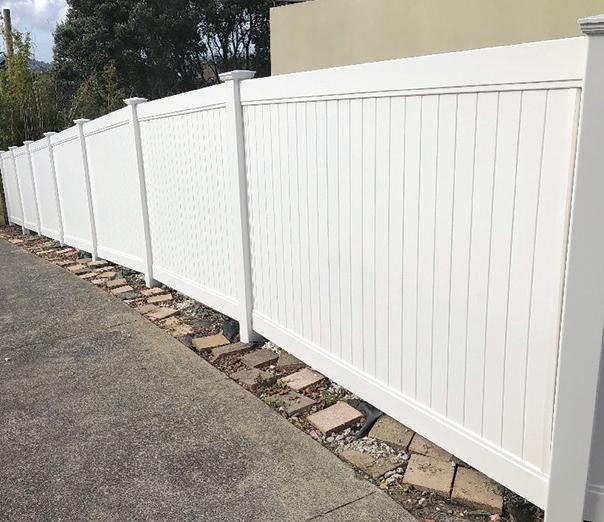

Like the people who manufacture them, Firth’s concrete ranges are all products of New Zealand.
The company employs 650 people spread across 70 plant sites throughout the country. Firth’s strength lies in its regional relationships delivering a quality service locally to loyal customers, every day.
Firth provides concrete services including:
• Ecomix Concrete
• Bagged Premix
• Bricks and Blocks
• Paving and Retaining.
Implementing sustainable practices throughout Firth’s manufacturing process is only the beginning of Firth’s contribution to sustainable building. Their sustainability pillars focus on carbon reduction, water conservation, the circular economy, supply chain ef ficiency and social responsibility. The team at Firth’s can design mixes to meet customers’ desired Embodied Carbon (EC) rating, thus making a contribution to the low carbon efforts in the construction industry.

Firth Industries believes that they need to look at the environmental impact of building materials, elements and the building as a whole while ensuring the durability and longevity of these buildings at the same time. Their teams are constantly working towards innovating and developing new products to make it easier for their customers to make smart choices towards a more sustainable lifestyle.
Firth is proud to be the first concrete manufacturer in the world to get Declare labels for
their ready-mix concrete and concrete masonry products.
For Firth, it means they can collaborate better with their suppliers and customers to recognise how they can design and build for the future to include durability and longevity and provide a pathway to repurpose their products.
For all your concrete needs, contact Firth Industries today on 0800 347 841 or on 09 583 2121. Alternatively, head over to their website for more information at www.firth.co.nz.



At Ray White, we understand that finding the perfect home or selling your property is more than just transactions, it is about realising your dreams.
That is where Alastair Hubbard shines. With a passion for people and a commitment to excellence, Alastair brings a unique blend of expertise, dedication, and personalised care for every one of his client’s journeys.
Based in Ray White Sandringham, Auckland, Alastair’s generosity of spirit is felt throughout the local community. Coming from a strong corporate, entrepreneurial and teaching background, he recognises
the importance of building strong relationships with local businesses and people around him. Alastair brings a fresh perspective to each sale and possesses a depth of business experience.
Whether you’re looking to buy, sell, or simply explore your options in the real estate market, Alastair is here to guide you every step of the way. Our listings aren’t just properties; they are gateways to new beginnings and fond farewells to cherished
Thinking of selling? Want
homes. With Alastair’s deep market knowledge, innovative strategies, and relentless drive, you’re not just getting an agent; you’re getting a partner who is invested in your success.
Why choose us? It is simple:
• Personalised Service: We listen to and understand your needs and dreams
• Expert Knowledge: Stay ahead with our in-depth market insights
• Unmatched Dedication: We go the extra mile to ensure your satisfaction.
Experience the Ray White difference with Alastair Hubbard. Let’s embark on this journey together, making your real estate dreams a reality.

For a friendly, honest and professional service that maximises your property value, contact Alastair today at alastair.hubbard@raywhite.com or call 021 0221 5939.



Setting goals is all about heading into the future on the right track.
Yes, when you reached the end of 2023, you could look back and be proud of all you accomplished. This moment of proud reflection, needs to be just that – a moment –before turning your attention to the year ahead.
According to Health Navigator New Zealand, having a goal helps motivate you and gives you direction in general everyday life.
“You may have one goal or several and they may be short or long-term. Whatever you’re aiming to achieve, it’s never too late to start.”
They also suggest research shows setting goals and working towards them can contribute to your overall happiness.
There are many different strategies to set goals. Start with deciding what your goals are by doing a self-
There are many different strategies to set goals. Start with deciding what your goals are by doing a self-journaling session or creating a vision board.
Writing down your goals and developing a plan on how you will achieve them is an important part of the goal setting process.
journaling session or creating a vision board.
Writing down your goals and developing a plan on how you will achieve them is an important part of the goal setting process.
Health Navigator New Zealand says, “Writing your goals down helps clarify what you want to achieve and increases your chances of sticking to them”. They also suggest that, “You may encounter setbacks on your journey towards achieving your goals. The key is to not give up.
“If you hit a roadblock or something isn’t working, you can always try a different
approach or re-adjust some of the steps [if needed] in order to achieve your goal.”
Breaking down your goals into measurable stages will help you feel as if you can achieve them in a timely manner. Using the acronym SMART is one way to help stay on track. Goals which are achievable and realistic means you are more-likely to be self-motivated to strive for achievement throughout the year.
SMART goals are:
Specific - Make sure your goals are specific enough so
you know exactly what you are working towards. Breaking this down can also help with feeling overwhelmed when wanting to set your mind to a task.
Measurable - Ensuring you have a plan on how you can measure your goals is important. Facing the dreaded feeling of not moving forward can be disheartening. Measuring your goals in steps means the outcome will feel possible.
Achievable - This is not to say you can’t ‘reach for the stars’ with your goals, but ask yourself if they are achievable within your current circumstances. What changes do you need to implement in your day-to-day life to ensure you stay on track?
Realistic - Similar to Achievable here! You could travel but how much do you need to save? Want to eat healthier? You might need to buy less dinners out. Be realistic with yourself and know goals require consistent and realistic effort.
Timely - Putting a timeframe on your goals can help motivate
you. If goals are set too far in the future, they may feel impossible to complete. Or, if you don’t allow yourself enough time you may feel unaccomplished. Finding the right balance with time and goal setting is key here.
Reviewing goals periodically means you keep revisiting and reflecting on your progress. Keep on track with your goals by being honest with yourself about what stage you’re at throughout the year.
All of the SMART goal strategies work together to ensure you’re well on your way to accomplishing your goals and dreams.
Be realistic with yourself about how you will work towards them and you’ll be one step
This place a high level of importance on doing what we find to be intrinsically motivating or working from what is inherently rewarding.
closer to them coming true before you know it.
Self-determination theoryHealth Navigator New Zealand says, “Setting goals that draw on personal motivations produces greater confidence in our ability to change and greater sense of ownership over the process”.
Personalising your goals to suit your personal motivations is one way to ensure you pick the right goals and they ‘stick’.
“The importance of ownership for personal motivation is captured nicely in what is known as the self-determination theory of motivation.
“This place a high level of importance on doing what we find to be intrinsically motivating or working from what is inherently rewarding.”
Selecting goals which come from a place of personal value over external validation will also
mean achieving your goal will feel that much more satisfying.
Throughout the year make sure to look after all aspects of your hauora wellbeing including mental and physical health.
Goal setting should be a positive experience where you can take time to understand what you envision your year to look like. Setting goals in the New Year can be daunting and exciting. Looking ahead into the future can feel impossible but with small, consistent steps, you will be able to see change in your life.










Josh,
Throughout
Josh


With over 17 years of experience, ForknHoe are Auckland’s landscaping and gardening specialists.
They execute with precision, care and dedication on every job, whether it be big or small, residential or commercial. From revamping a garden to moving some serious dirt, the team at ForknHoe can handle it all.
The highly skilled team of green-thumbed professionals will customise their service to your exact specifications. ForknHoe put their clients first and pride themselves on their dedication and attention to detail. You can rest assured that your garden is in safe hands with the team at ForknHoe.
The family-owned business offers a wide range of services from concept and design, soft scaping, hardscaping and tree care to commercial and maintenance. They offer step-by-step assistance and advice in planning your dream garden, manage the planting and care of plants, trees and lawns, create non-living design elements such as walkways, decks, pavers and brickwork, provide arborist services and so much more.
ForknHoe don’t just work in the residential sector either; they can manage body corporates, office indoor plants, large commercial outdoor spaces and installations. The team love nothing more than reinvigorating neglected outdoor spaces and turning them into inviting gardens which lift the look and ambience of their surroundings.

If you already have an established garden space but are struggling with the upkeep, ForknHoe can sort that out too. You can leave the grunt work to the team who can do all manner of things from pest control, weed control and disease control to pruning, trimming as well as fertilizing.
For the very best in garden transformation specialists in Auckland, don’t hesitate to reach out. For more information and a free quote, visit www. forknhoe.nz. Get in touch with the team on 09 215 4924 or 021 990 812. Alternatively, you can flick them an email at cherie@forknhoe.nz.


NOR-WEST AND KUMEU GLASS PROVIDE OUTSTANDING SERVICE FOR CUSTOMERS AND TAKE PRIDE IN COMPLETING THE JOB PERFECTLY.
WE OFFER MANY SERVICES FROM PET DOORS TO AUTO GLASS
We are a family business with over 20 year’s experience and our services extend all over Auckland.
9a Weza Lane, Kumeu, Auckland 0810
Tel: 09 412 9914 | Mob: 022 089 8628
Mob: 027 496 5596 nwkgs@xtra.co.nz | info@nkglazing.co.nz
• Residential Glass Repairs
• Automotive Glass Repairs (Windscreens)
• Commercial Glass Repairs (Shop Fronts etc.)
• Cat/Dog Doors (Supply & Install)
• Glass Cutting Onsite
• Splashbacks
• Mirrors
• Table Tops
• Picture Frames
• Insurance Claims
• Free Quotes
Working in trades isn’t for the faint of heart. Banter is typical and part of the job. But what happens when it goes too far?
In some workplaces, jokes are a way for people to communicate and have fun. Kiwis often bond with sarcasm.
But all tradespeople should be treated with dignity on the job. Everyone has the right to a safe and respectful work environment.
And it can go both ways. It should go without saying that workers must be respectful to clients.
Recently, a plasterer admitted he went too far after calling his client a con man and child molester because the client wouldn’t pay $16,000 for the work completed.
Written contracts are crucial in settling any dispute, and ensuring licences are up to date is also key.
But for those subject to abuse, there are steps to take when things get out of hand.
Firstly, record every instance where an insult or inappropriate behaviour occurs. This includes the date, time, who was involved, what was said or done, and any witnesses.
This documentation can serve as evidence if a formal complaint needs to be made.
It can be easier said than done, but a direct conversation might be the best action if the person making the insults is a colleague.
Calmly and professionally explain how their behaviour affects you and ask them to stop.
If the insults are severe or frequent, and the employer fails to take action, it may be necessary to seek legal advice.
A lawyer can guide whether there are grounds for a complaint or legal action.
If the insults continue or escalate, reporting the incident is essential. Supervisors should be able to guide how to handle the situation and may be able to intervene to stop the behaviour.
Don’t hesitate to contact your support network for advice and emotional support. This could be a union representative, a trusted colleague, a mental health professional, Employment New Zealand, and so on.
If the insults are severe or frequent, and the employer fails to take action, it may
be necessary to seek legal advice. A lawyer can guide whether there are grounds for a complaint or legal action.
There can be a real hardenup mentality when faced with abuse, but times are changing. It doesn’t have to be this way.
Don’t suffer in silence if you’re facing insults or inappropriate behaviour at work. Take action to protect your well-being and dignity.



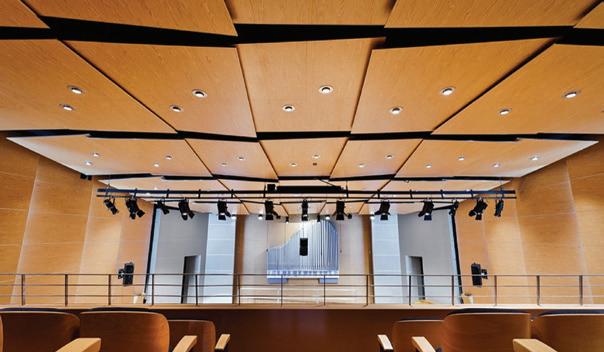


• The country’s largest independent safety-netting specialist.
• Our fall through protection system has been independently tested and certified by Massey University.
• Our system ensures that as a PCBU, you have taken all reasonably practicable steps to ensure the safety of your workforce.
• Bespoke debris and asbestos containment, fall protection system for uninterrupted work processes during industrial property re-roofing.
• A nationwide network of local installers providing exceptional customer-focused fall arrest solutions.
The New Zealand Productivity Commission (Te Kōmihana Whai Hua o Aotearoa) advises the Government on the best ways employees can be productive to support wellbeing and how technology benefits, but also disbenefits, the workplace.
The commission is an independent Crown Entity that started in 2011 after the New Zealand Productivity Commission Act was passed in 2010.
The commission conducts inquiries on topics the Government suggests, investigates how the topic can improve productivity over time, and lets the Government know the underlying issues involved.
The Government requested the commission to conduct an inquiry regarding technological change, disruption, and the future of work.
The commission wrote a final report with recommendations on how to improve productivity and support people’s wellbeing by understanding the benefits and disadvantages of technology in the workplace.
The benefits:
• Technology creates many jobs for people, rather than replaces jobs
• There isn’t much sign of an emerging technological disruption
• Aotearoa needs more advanced technology, as it benefits the economy and workplace productivity
• Aotearoa is well-placed for faster technology adoption in some areas - Aotearoa’s policy settings generally support

The Government requested the commission to conduct an inquiry regarding technological change, disruption, and the future of work.
openness to ideas, goods, services, investment and skills.
The disadvantages:
• Important skill levels in schools are decreasing
• Due to the housing crisis it’s hard for some workers to move to better jobs
• Businesses in general lack dynamism compared to other countries
• Aotearoa should build on its strengths and address its weaknesses:
• Policy changes could be created to prepare Kiwi individuals for the future of work, making training more flexible and accessible
• Improve and increase the amount of careers advice and employment support that’s available
• Address the school system performance
• Update employment law to make people more aware of how technology is changing some workplaces and make it easier for employers (like contractors) to gain benefits like insurance and training opportunities.
Read more about what the commission found when completing its inquiry here: www.productivity.govt.nz/ inquiries/technology-and-thefuture-of-work.
To conclude - technology matters for productivity and wellbeing, but also impacts the future of work.
Firstly, the country is flexible, very skilled, and has a lot of support for people who can provide goods, services, data, ideas, technologies, and investments.
However, Aotearoa also has its disadvantages that limit people’s ability to adopt technology in the future and/or make it harder for some people to adapt to the technological changes.
For instance, there’s a poorer socio-economic disadvantage for minorities such as Māori and Pasifika communities, and Aotearoa (by international standards) seems less enthusiastic about emerging technologies impacting Aotearoa’s social and economic aspects.
A link to the final report can be found here: www. productivity.govt.nz/assets/ Documents/223e187413/At-aglance_Technological-changeand-future-of-work.pdf
I can assist putting people in touch all over Auckland and Tauranga districts for buying and selling.
Call or email me at Barfoot & Thompson Waiuku. I look forward to showing you around and finding your place in our community.
Residential/Rural Sales Waiuku Branch
027 457 8045
D.andrew@barfoot.co.nz
Barfoot.co.nz/d.andrew I commit to developing great relationships and delivering on expectations.
Top Salesperson Waiuku Office
Year End 31st March 2023

I’ve been working in real estate since 1998 and I can honestly say it has been a very happy 24 years. Born and bred in Waiuku, I find the Franklin District is a fabulous place to live and includes inland and coastal settlements such as the Awhitu Peninsula, and the townships of Pukekohe and Waiuku. If you like being near the water, there’s some exciting new builds at Clarks Beach and Glenbrook Beach, right on the edge of the Manukau Harbour.
I love working with people – from first home buyers to elderly clients. My natural empathy for them and their individual circumstances, along with a desire to achieve the very best outcome is what motivates me every day. With every client I have a meticulous routine when it comes to research and marketing and my ability to capture the real essence of a property has led to amazing results.
Often, I meet people and they just want to talk about real estate. I discover what they’re
looking for, they go on my database, I keep in touch regularly and in six months’ time, hey presto, I’ve found the property of their dreams! Once met, never forgotten.
I’m proud my real estate career has been with Barfoot & Thompson. At present, the company holds the majority market share for the Franklin district, so listing with me and the team at Waiuku will generate maximum competition for your property sale.
I currently live on the outskirts of Waiuku enjoying a semi-rural lifestyle. Spending time with my children and grandchildren is important to me and in my spare time I enjoy tending my trees and growing my own vegetables and I especially love knitting singlets, beanies and socks for babies. My latest fad is painting with acrylics. Besides canvas, craft acrylics can be used on wooden, metal, fabric and ceramic surfaces. It’s easy to work with and dries very quickly.
barfoot.co.nz


Electrical & Lighting Services Auckland Wide
Design – Supply – Install – Maintain
• Highest quality fixtures and fittings
• Huge selection of stylish commercial and residential lighting
How can we assist you?
Repairs, Maintenance, Renovations and New Builds
RLM Lighting & Electrical provides end-to-end electrical and Lighting services. Whether you’re fitting out a new house, renovating an existing one, or need electrical repairs and maintenance carried out ASAP, there is no job too big or small for us. We put the same focus into the small jobs as we do the big ones because every client is important to us.
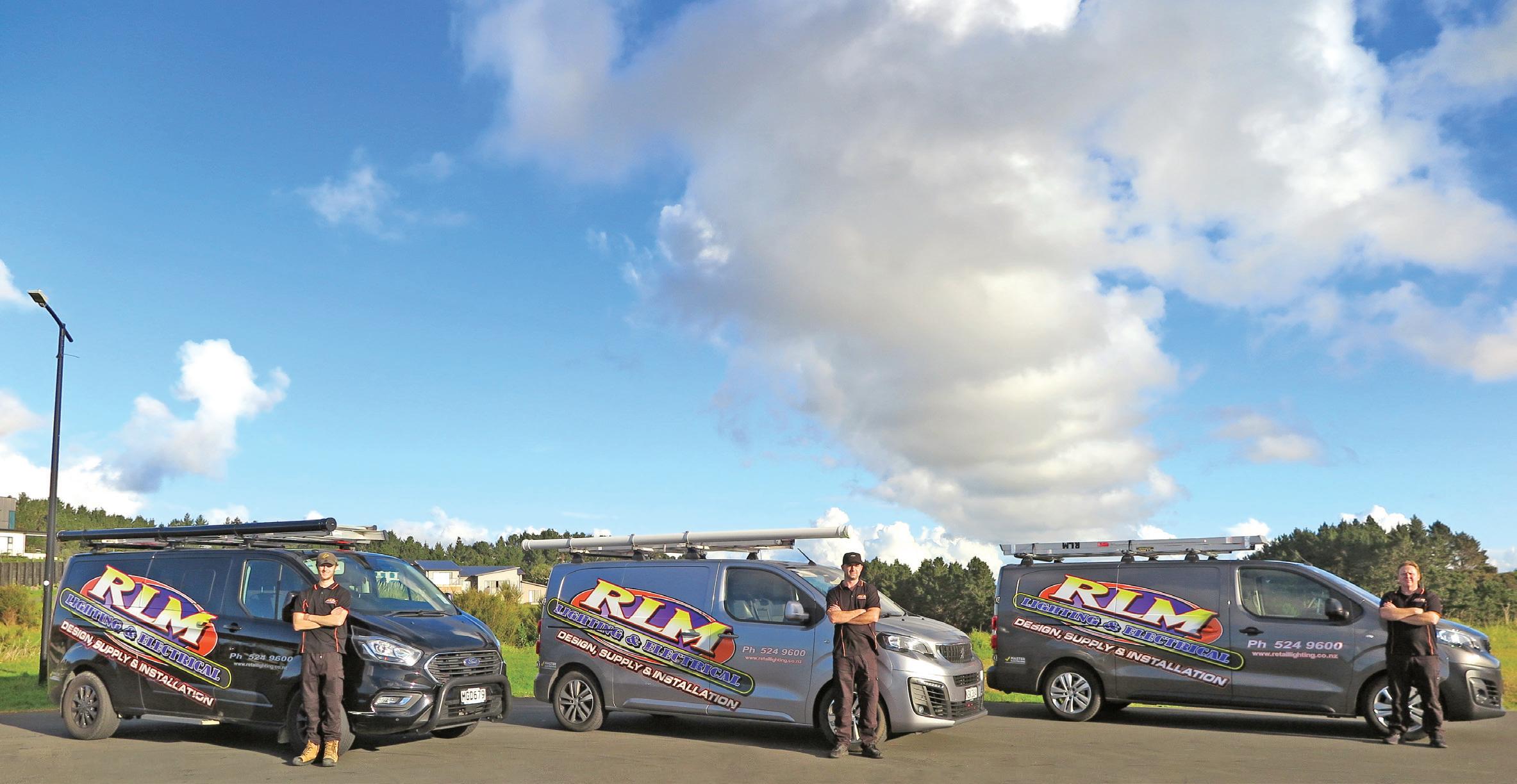
So if you want someone who will –
Come when they say they will
Provide value-adding solutions
Act highly professional, we’re the team for you!
Our qualified and registered electricians provide the best solutions for your specific needs. Safe, professional work practices with a peace-of-mind Master Electricians Guarantee, we tick all the boxes.
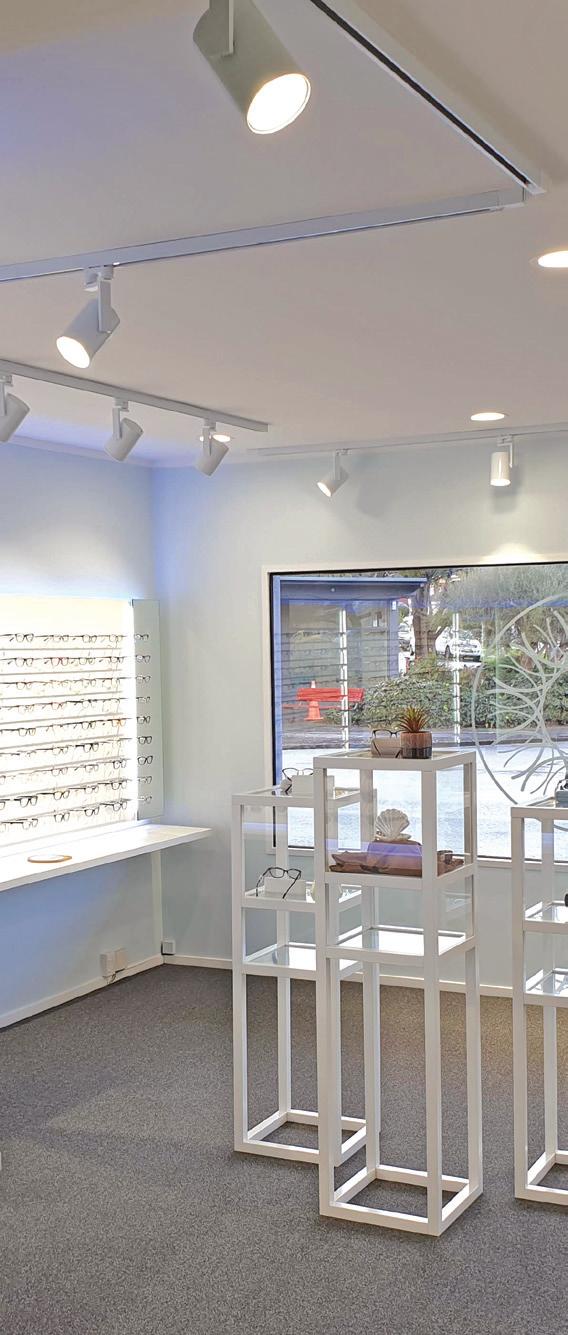


In January, GNS Science released new land-use planning guidance to manage and reduce the risks of landslides.
Considering the dangers of land use early in the planning and decision-making processes avoids costly and potentially dangerous new developments that could pose risks to people, property, and the planet down the line.
Guidance co-author and GNS Engineering Geologist Dr Saskia de Vilder said that, on average,
 By Ben O’Connell
By Ben O’Connell

landslides cost Aotearoa New Zealand $250 million yearly and have resulted in more fatalities than earthquakes, volcanoes and tsunamis combined.
Landslide Planning Guidance: Reducing Landslide Risk through Land-Use Planning has been developed to support a risk-based approach to landuse planning that considers changing weather patterns as well as current risk assessment, management and mitigation practices.
At a minimum, the Guidance recommends councils develop a landslide susceptibility map

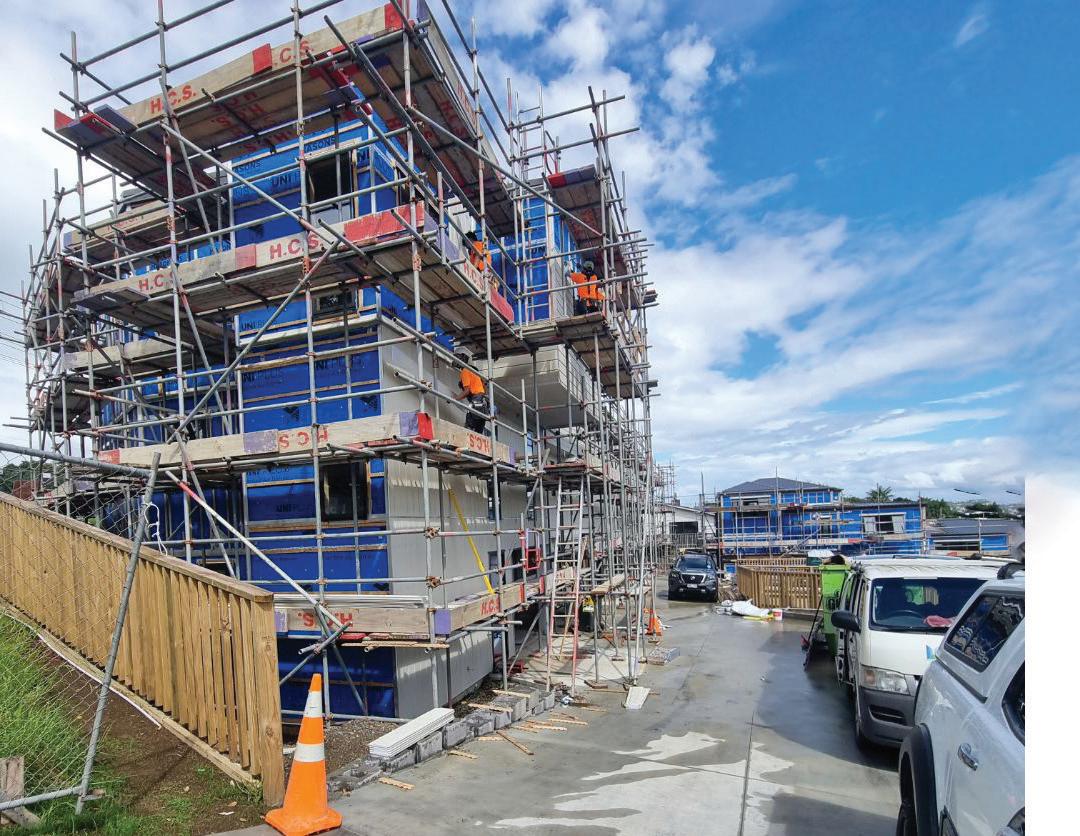




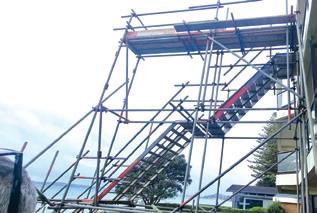
to better inform important decisions that determine where and how we live.
The Landslide Planning Guidance updates previous guidance released more than 15 years ago. It emphasises the need to consider climatechange scenarios likely to exacerbate landslide hazards due to changing weather patterns.
Speaking of mapping, this new landslide guidance coincides with recent research on landslides from the University of Canterbury. Canterbury researchers and students mapped 140,000 landslides triggered by Cyclone Gabrielle to create models for future weather events.
New Zealand now boasts one of the largest single-event inventories of landslides globally. Senior Lecturer and lead researcher Dr Tom Robinson was surprised at the sheer number of landslides they found.
New Zealand now boasts one of the largest single-event inventories of landslides globally. Senior Lecturer and lead researcher Dr Tom Robinson was surprised at the sheer number of landslides they found, “in the Esk Valley alone, in just one 12km square area, you’ve got over 2000 landslides.”
Mapping and guidance measures both lead to improved future resilience. “Landslides
Located in Rukuhia next to Hamilton Airport, SEP design and manufacture quality products from sheet metal and stainlesssteel wire including components, accessories, and complete machines for industries such as Food and Dairy, Power Utilities, and the Health sector.
Integrating our own innovative designs many of our products greatly improve efficiency, safety, and connectivity. We have the capacity to produce custom solutions and are ideally set up to fabricate either short or long-production runs, oneoffs, or prototypes.
Our workshop is fully equipped with a 3 metre wide Brake Press, 2.4 metre Guillotine, Water Jet
Cutter allowing intricate cutting and finishing to within 0.1mm, Spot Welders, Stud Welders, and Tig & Mig Welders.
Our onsite Electricians allow SEP staff to install custom fit-outs for power utility companies, create custom enclosed Control Panels and Isolators meeting all Hygiene standards, and more. Installing mainly ABB componentry with their reputation for quality, reliable and durable products, SEP is also a supplier of ABB products New Zealand-wide.
With clear communications, a can-do attitude, transparent quoting, and real service, SEP is a quiet achiever. To talk through your upcoming projects, call Aub Hart Phone 0274 778 445 or visit our website at www.sep.co.nz
are difficult to forecast and predict; the only way you can do it is by looking at where they’ve occurred in the past,” Dr Robinson says.
“Mapping tells us the conditions that triggered them in the past: the type of slopes, what is on the land, has rainfall caused it and if so, how intense was the rainfall, was it an earthquake, how much shaking was there –all critical information telling us how landslides occur.
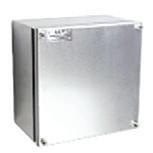

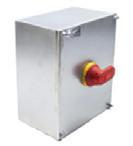

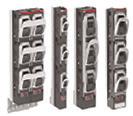
“So, when we have a future event, particularly rainfall, we could say this is where we think a landslide is most likely to occur, the predicted trajectory, what’s in its path, and therefore do we need to shut roads, do we need to evacuate people?” says Dr Robinson.
The team uses aerial imagery with up to 30cm high resolution, imagery so powerful you could spot a laptop on the ground for mapping.
“We’ve mapped over 140,000 landsides, the smallest roughly the size of a car, from 20 percent of the area affected by Cyclone Gabrielle. We can’t possibly map them all, but we believe there are about 750-850,000 in total.”
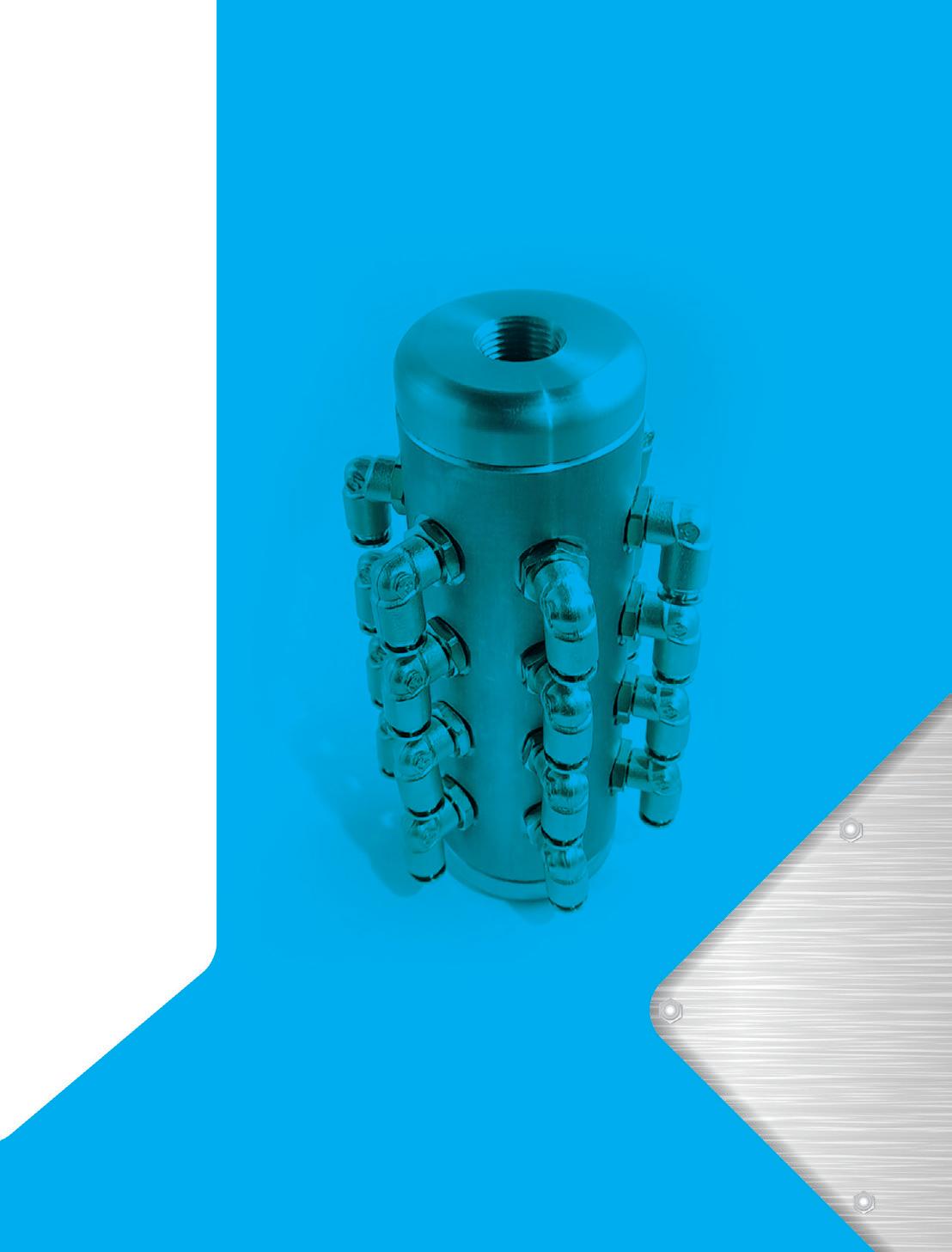
Millwater Dental is committed to providing clients with exceptional dental care.
“Our philosophy is simple: we believe that the preservation of tooth structure is paramount. That is why we offer a wide range of dental treatments, including family dental care, orthodontic teeth straightening, aesthetic solutions, and comprehensive smile rebuilds.”
Your smile is your statement, and the team at Millwater Dental understand that even the smallest of changes can make a big difference in creating a great smile. The team takes pride in every detail, from the colour, size, shape, and alignment of your
teeth to how they are framed by the gums, lips, and face.
We believe that the preservation of tooth structure is paramount.
Millwater Dental is committed to providing an exceptional dental care experience. During your first visit, their dentists will conduct a comprehensive one-hour appointment to assess the condition of your mouth, teeth, and gums. Using a holistic approach, they will evaluate your oral
health condition, identifying any concerns such as gum disease, oral cancer, and jaw functionality problems, and advise you of any health risks.
To ensure accurate diagnosis, they use advanced technology such as digital X-rays of your teeth and jawbones, photos, intraoral scans and study models, and NIRI (near infra-red imaging) to scan the internal structure of the teeth. This allows them to create a personalised dental plan tailored to your needs.
Millwater Dental values their clients and families. That’s why they offer free routine dental treatment for teenagers (from year 9 up to 18 years of age) who attend an education facility. This

is because the team recognise the importance of promoting better oral health habits amongst the younger generation.
To experience the comprehensive care offered at Millwater Dental, visit them at Suite 21, 175 Millwater Parkway, Silverdale, Auckland, or call 09 972 1518 for more information. You can also visit their website at www.millwaterdental.com.
With their exceptional care and state-of-the-art technology, Millwater Dental is here to help you achieve a healthy and beautiful smile.








Today’s AI tools are transforming content creation. The latest and most advanced AI tools cater to various tasks, including video editing, writing assistance, voice generation, editing support, and language translation.
Here are some AI tools that can assist you by undertaking tasks and saving you valuable time.





Forget expensive video production or spending hours learning complex editing software. Pictory is an AIpowered platform that turns anyone into a video editing pro. Simply input your text or script, choose from a vast library of video clips and images, and let Pictory’s AI handle the rest. It automatically generates video scripts, edits clips, adds music and sound effects, and even creates intros and outros. The result? High-quality, engaging videos that can be used for marketing, social media, training, and more.
Callon Creative transforms your marketing from complicated to simple, ensuring your brand’s influence is felt far and wide.
Amy Callon, founder of Callon Creative, is passionate about transforming marketing confusion into clear, actionable plans.
Inspired to start her own business for the flexibility and personal fulfilment it brings, Amy thrives on problem-solving and making marketing simple, fun and personalised. She values the joy of seeing her work and her clients succeed in the real world, emphasising the importance of confidence and dedication in her journey.
with engaging content, Amy’s expertise lies in creating consistent and strong brand identities. Imagine having a partner who not only designs your logo and website but also takes charge of your entire online presence, leaving you free to focus on what you do best.
With glowing testimonials from satisfied clients, Callon Creatives personalised approach to marketing makes all the difference. Let Amy’s passion and creativity bring your business goals to life, offering you peace of mind and the joy of seeing your brand thrive in the digital world.

From crafting a compelling website that captures your brand’s essence to managing your social media presence

Writer’s block? No problem! Jasper is your AI writing assistant who can help you create content, from blog posts and articles to social media captions and marketing copy. It can even generate different creative text formats like poems, code, scripts, and musical pieces. Whether you need help brainstorming ideas, overcoming writer’s block, or simply polishing your existing work, Jasper is a valuable tool for any business owner who wants to create high-quality content without the hassle.
Forget robotic, monotone voices. Murf uses AI to create realistic-sounding human voices from text. This means you can create narrated videos, explainer videos, podcasts, and even custom voiceovers for marketing

materials and presentations, all without needing a professional voice actor. Murf offers a wide range of voices and accents, so you can find the perfect one to match your brand and message.
Gling is your AI editing sidekick, instantly detecting and snipping away silences and disfluencies from your videos in just minutes. Skip the tedious chopping and scrubbing, upload your
footage, and let Gling’s smart tools cut the fat, leaving you with a polished, ready-to-share masterpiece. Focus on your creative magic while Gling handles the editing grind.
Filming with multiple cameras can be great for capturing different angles and perspectives, but editing the footage can be a timeconsuming nightmare.
AutoPod’s AI takes the pain out of multi-cam editing by seamlessly blending footage from up to 10 cameras and 10 mics into a near-finished edit. It easily handles solo shots, group chats, and wide angles and even adapts to your preferred editing style. Whether you’re a seasoned editor or a complete beginner, AutoPod can save you hours of time and effort.
Reach a global audience and break down language barriers with Heygen’s AI. This innovative platform seamlessly translates and dubs your videos, perfectly syncing speech with lip movements for a natural, engaging experience: no more clunky subtitles or distracting text overlays. With Heygen, your videos can be understood and enjoyed by anyone, anywhere in the world.
Ian Buchanan is a proactive and well-connected real estate agent who has been selling lifestyle and country property in Franklin and surrounding areas for well over 10 years.

A professional you can always rely on, Ian brings a unique level of expertise, having worked in architecture, project management and interiors prior to joining the real estate industry. He also applies first-hand experience and a clear understanding of Franklin properties,
having owned similar assets in the area.
When you work with Ian, you’ll notice he takes the time to understand your goals and needs before clearly explaining the value of your home, highlighting the ways you can improve its appeal, and working with you to decide on the most effective selling strategy. As a result, you will feel confident and informed about the entire selling process as well as genuine clarity about the potential outcome.
Many home sellers return to Ian on multiple occasions and are happy to refer friends and family because they know he offers quality service that is
second to none. Ian is highly recommended thanks to his in-depth market knowledge as well as his ability to engage and motivate multiple buyers. His service is tailored to each property and its owners, which is the key to facilitating outstanding results.
“My first priority is communication and sharing the information you need to make decisions and take action. Let me explain the selling process and guide you toward an outcome that you will be proud to tell your friends and family about. A referral is the ultimate compliment I can receive.”



Requests to build new homes have plummeted after an all-time sector peak.
Generally, new home consents in the last few years have risen from late 2020 and then declined from late 2022.
Per Stats NZ, 37,239 new homes were consented to in the year ending December 2023, down from a peak of 51,015 in the year ending May 2022.
Decreased consent levels are due to many factors, two of which are increased construction costs and the impact of record immigration on housing demand and market prices. Data only indicates changes
in the number of houses nationwide because some consented homes are not built.
Multi-unit homes have been the dwelling type most consented to since March 2022. These include townhouses, apartments, retirement village units, and flats.
Of the multi-unit homes consented to in the year ended December 2023, there were 16,779 townhouses, flats, and units, down 19 percent compared with the year ended December 2022.
2,518 of consented homes were apartments, down 43 percent, and 2,267 were retirement village units, down 23 percent.
The regions with the highest number of consents issued were Auckland, with 15,488; Canterbury, with 6959; the Waikato, with 3548; and Wellington, with 2427.
2023 was the first year that the number of townhouses, flats, and units consented exceeded the number of
In the year ending December 2023, 15,675 stand-alone houses were consented, down 27 percent from the year ending December 2022.
 By Ben O’Connell
By Ben O’Connell
stand-alone houses. Consent figures also demonstrate New Zealand’s growing urbanisation. These days, it’s one step backward and three steps forward when building homes.
The number of new highdensity homes consented to typically forecasts increased removal of existing older stand-alone properties.
In the year ending December 2023, 15,675 stand-alone houses were consented, down 27 percent from the year ending December 2022.
This continued into January 2024. 36,453 new homes were consented, down 26 percent from the year ended January 2023.


With over 250 residential deconstruction projects completed, and 7 years experience between Alex and Dylan, you can be sure your job will be completed safely, to budget and efficiently on time.
Between Alex and Dylan, they have completed over 250 residential deconstruction projects. Alex has 8+ years experience in the industry through various trades (building, electrical, and demolition and asbestos removal), and Dylan has 7+ years experience in deconstruction and salvage.
Through their time in the trades they noticed the waste that the industry contributes and turns a blind eye to. Together they decided that something needed to change, and no one else was doing it.
Levela Deconstruction specialises in the safe, cost effective deconstruction of residential homes and commercial premises with an emphasis on salvage, sustainability, recycling and forest restoration. The majority of our 4×2, 6×2, weatherboards and floorboards are upcycled into T&G Flooring. All B grade timber gets mulched and turned into playground bark, all of our GIB and plasterboard gets processed then turned back into gypsum and finally roofing iron is reused, joinery is either sold or donated.
CLIENT TESTIMONIAL
Alex and Dylan were very friendly, polite and professional. They arrived when they said and did the job quickly and efficiently. I definitely recommend them to others.
Alex Hawthorne M: 027 668 0071 E: alex@leveladeconstruction.co.nz
Dylan Bull M: 021 181 3242
533 Great South Road, Otahuhu, Auckland

• We provide a full report on all recyclable components of your house after a demolition takes place
• We can aid in salvaging before your demolition takes place completely free of charge. Ask us how!
EQUIPPED TO DECONSTRUCT SUSTAINABLY
• Power tools are our last resort
At Levela Deconstruction, we hold the belief that sustainability and environmental stewardship are crucial to our long-term success. We understand that our actions have an impact on the planet and we strive to minimise that impact as much as possible. This means implementing eco-friendly practices throughout our operations. We also believe that by promoting sustainability, we can inspire others to do the same and create a better future for generations to come. Our commitment to the environment is not just a business strategy, it is a core value that guides everything we do.
• ASBESTOS REMOVAL
• DECONSTRUCTION
• COMMERCIAL
• SMALL DWELLING REMOVAL
• HOME TRANSPORTATION PREP
• PRE DEMOLITION SALVAGE
• Crowbars, sledgehammers and simple manpower are all we need to deconstruct sustainably while protecting our precious environment and minimising our power footprint leveladeconstruction.co.nz admin@leveladeconstruction.co.nz




